We've had enough of overlanding and swapped the truck for a catamaran called Nemo and are off on the high seas.....
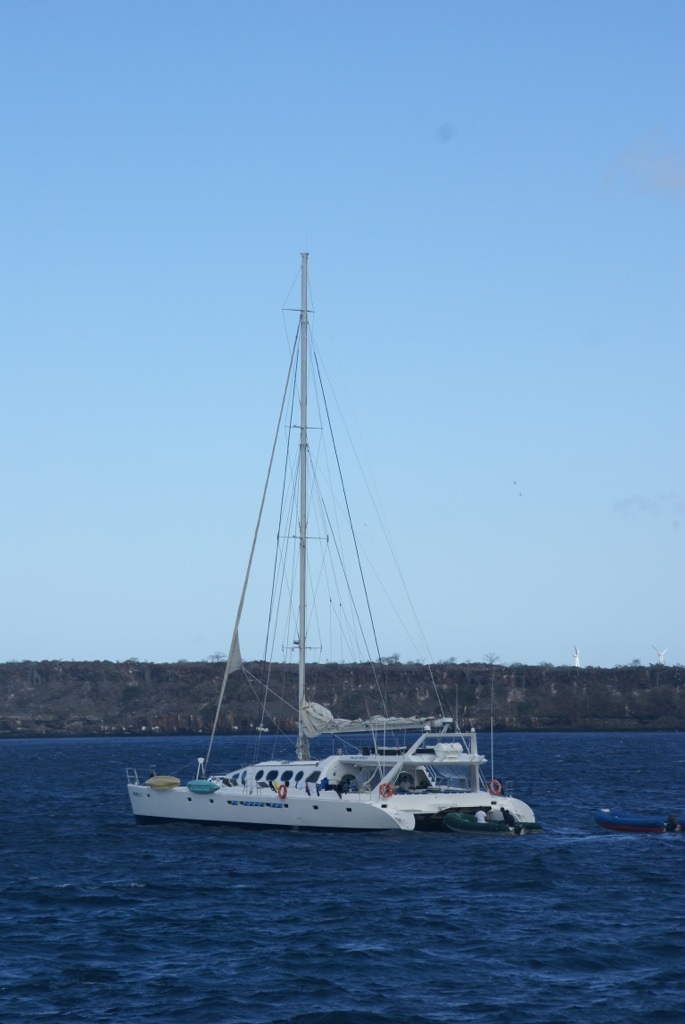
Well not exactly, we went to the Galapagos for a much anticipated week of exploring the islands.
The Galapagos Islands are about 1000kms away from South America in the Pacific Ocean. Their position on the Nazca plate that is slowly drifting eastwards and under the South American tectonic plate and above a volcanic hotspot means that the islands were formed from many eruptions. These happened at different times, so the islands are of different ages. The youngest ones still have black cones of larva fields without life even plants, whilst the oldest have eroded almost completely away. Those in their middle age, especially those with high enough volcanic peaks to attract rain are more lush and green.
Straight off the plane and onto the boat, our first stop after lunch was the small island of Seymour. The male Magnificent Frigate birds puff up their red throats to attract a mate, while sitting on a nest. The females then cruise past a few metres from the ground checking out their potential partners and their chosen spot. The male's throat looks so ridiculously enlarged, like it has a giant red pepper tucked under its chin.
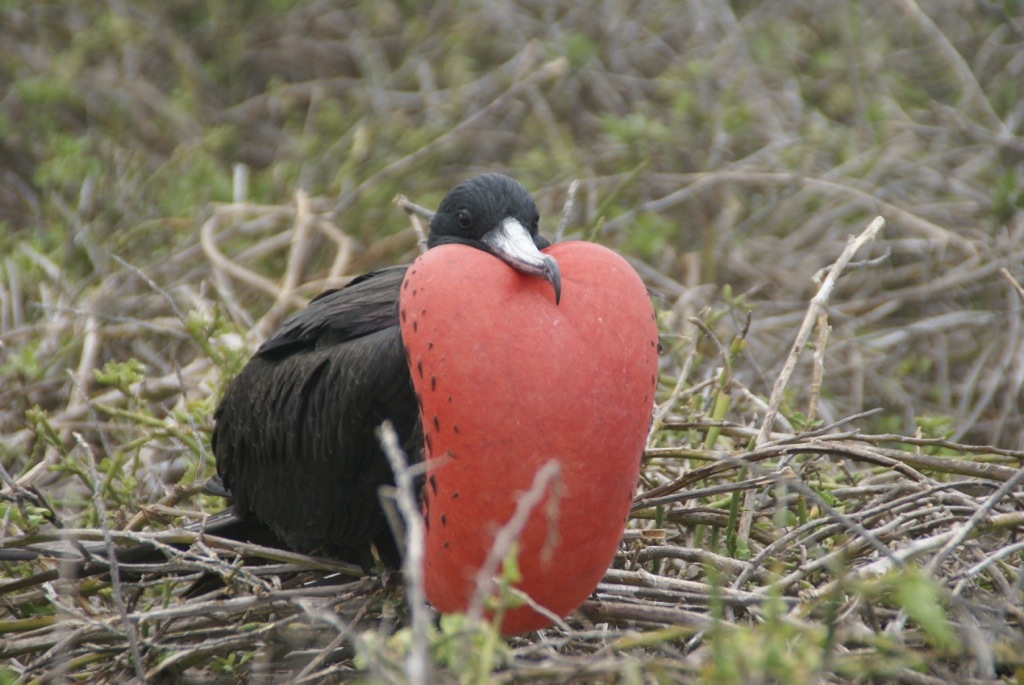
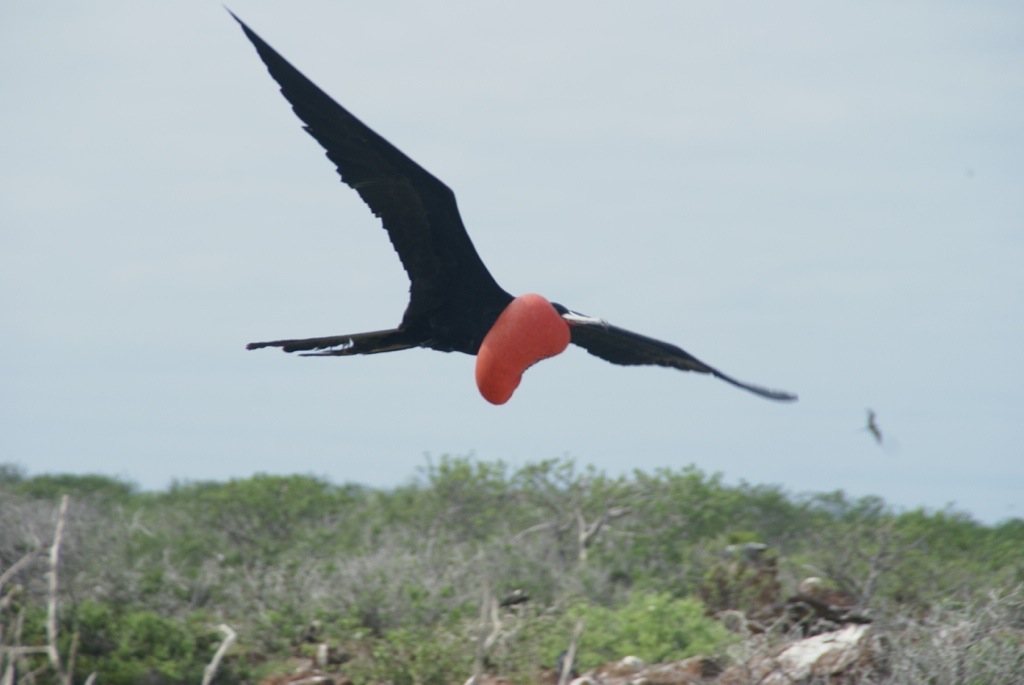
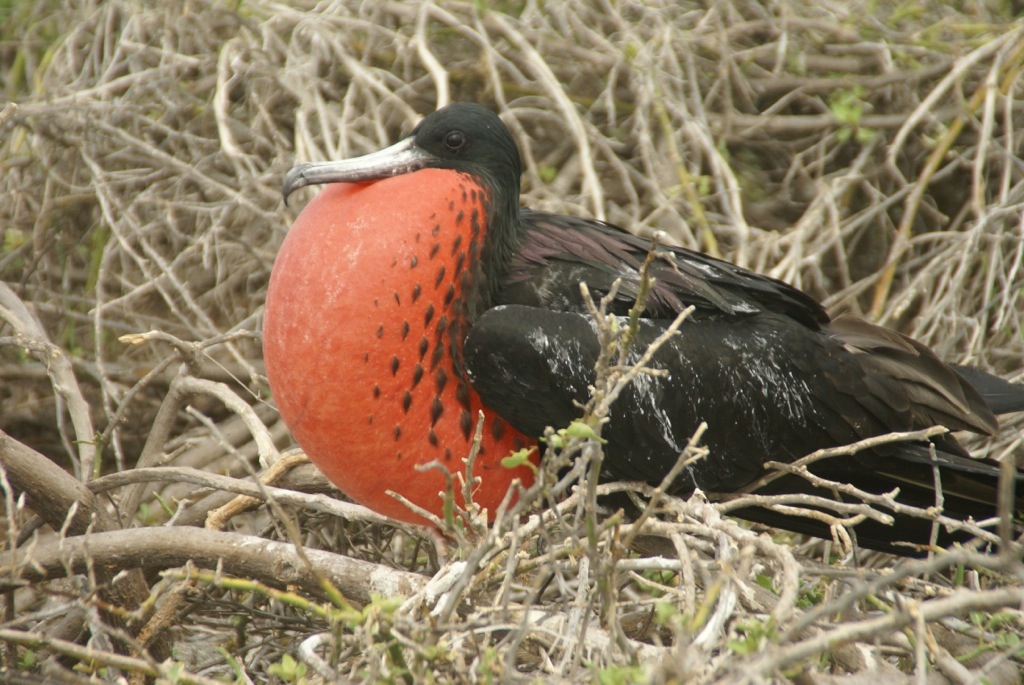
Also on the island was the bird Lucy had been looking forward to most, the Blue Footed Boobie. Bright turquoise feet, smooth circle of sand and a funky dance are the best way to attract a mate in the Boobie world.
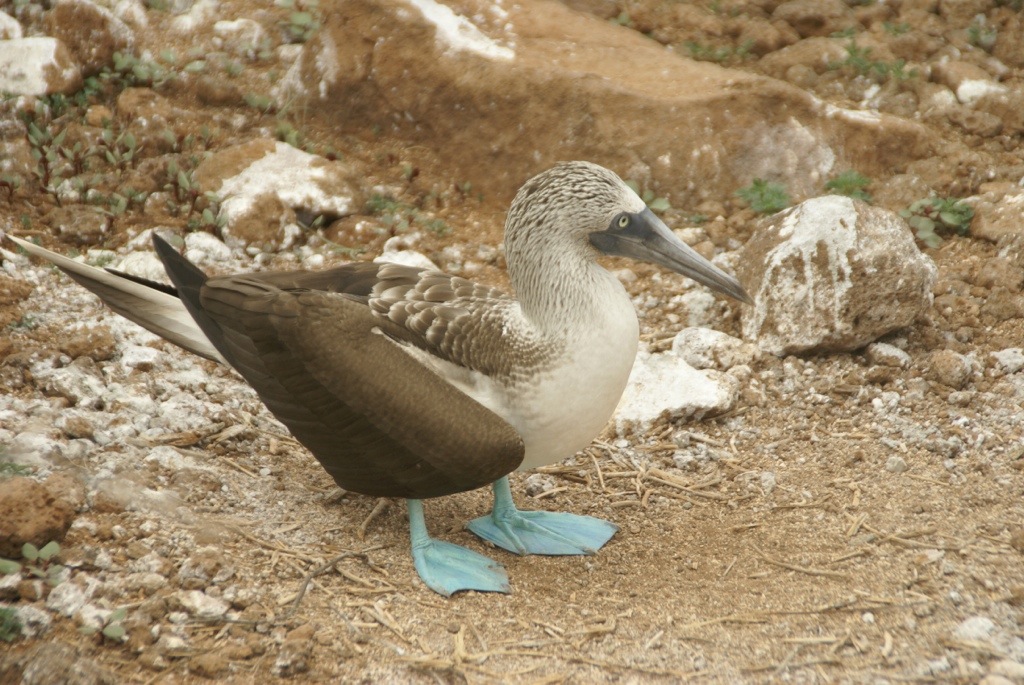

The island was really a great first day taster of some of the delights we were going to see this week with Galapagos Sea-lions, Land Iguanas, Larva Lizards and lots of birds.
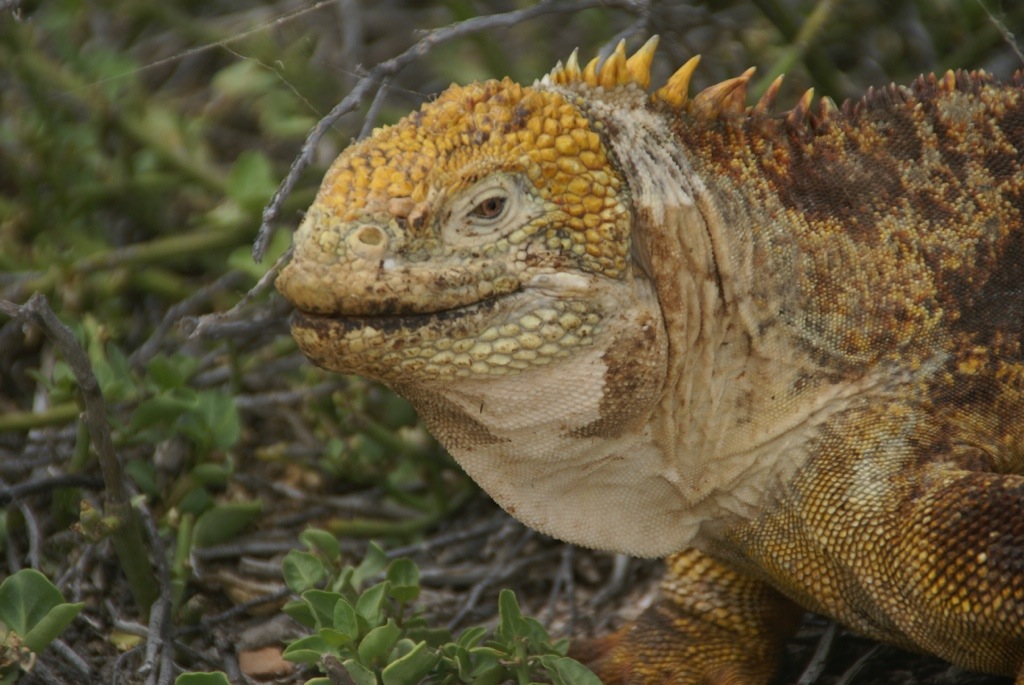
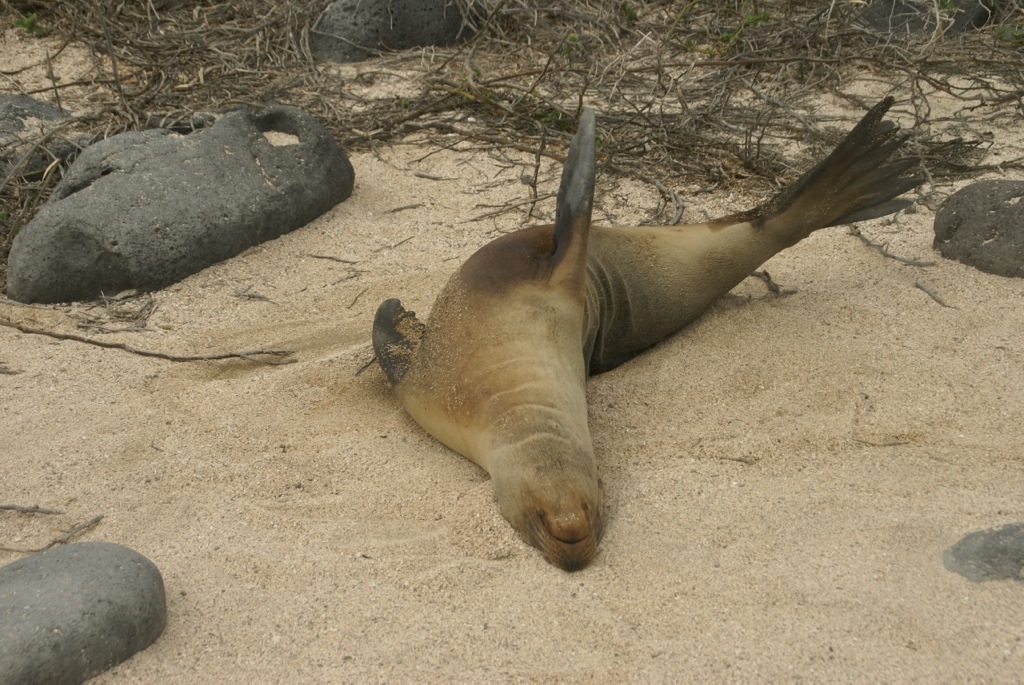
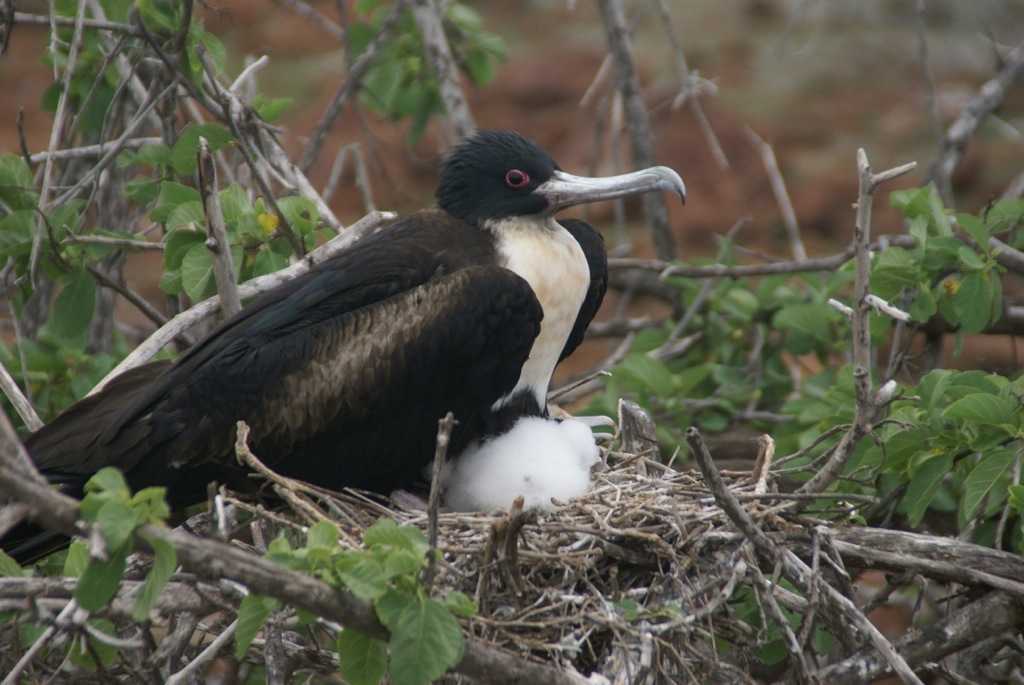
That night as we motored to the next island, we also got a taste of something we were going to see quite a bit of: rough seas. The captain set sail just after dinner, and as our expected smooth sailing got rougher and rougher that extra helping of pudding seemed like a bad idea. I don't think I was the only one to lose my delicious meal over the side as the tablets wore off. Not able to face rocking the bunks below, we collapsed in a family heap in the seating area outside in the back. When we moored up at 10.30, Steve and I exhaustedly carried the sleeping girls to their beds before we passed out below.
The following morning we awoke in a calm bay near the town of Porto Ayora to find all was good with the world again. Nemo II is a 21m catamaran for 12 guests with comfortable cabins, Lucy and I were sharing one with 6 foot high bunks, but she was happy to swap to her own special mini-bed made up on a bench at a safer height. The other 8 guests of a variety of ages and nationalities were a fun lot and our guide Carlos was very knowledgable and informative. There were also 6 crew on board, so all our needs are very well looked after.
Santa Cruz is one of the middle-aged islands so it has a variety of climates with lush green highlands. We took a bus up to where the tortoises were migrating to from lower elevations. A few times the bus driver had to pull off the road to pass these ancient looking beasts.
The primeval sound grunting from the edge of the lake was the give away that there was some giant Galapagos tortoise love making going on. Not one for flowers and romance a male tortoises idea of wooing a lady is chasing her under a bush till she gets stuck, then jumping on top. This male was massive, so I don't think the female was very happy, we couldn't even see her head, so I hope he hadn't downed her in the amorous encounter.

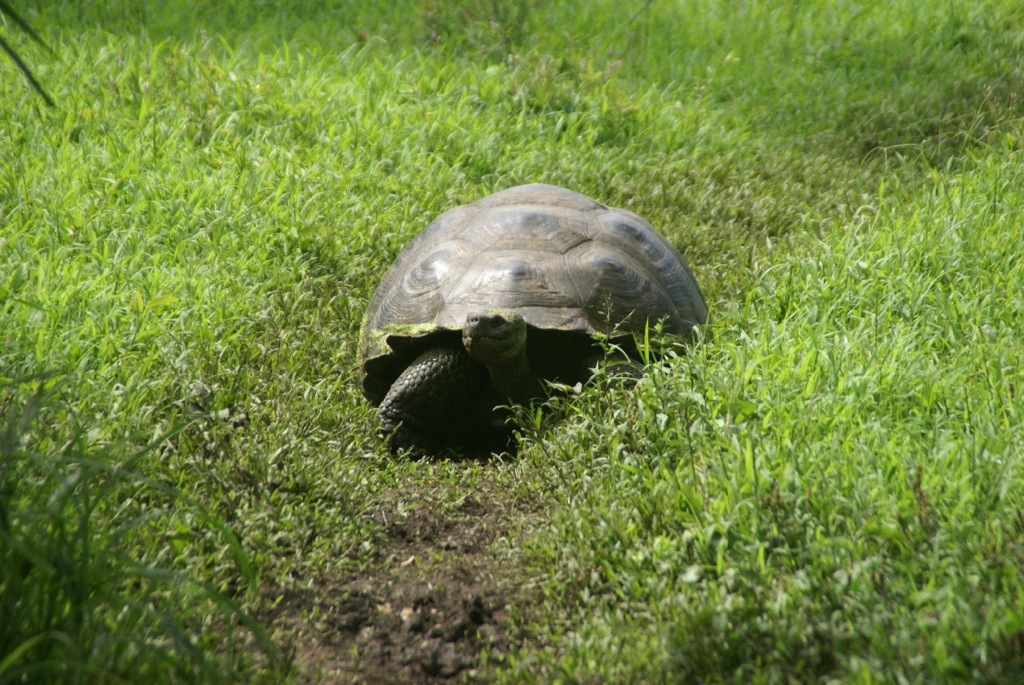
Back down by the shore, we went to the Charles Darwin Breeding Centre, where different species from the different islands are being bred for reintroduction to the wild. The tortoises on different islands have evolved into different species due to their need to adapt to the harsh environment and the geographical isolation. Those species found on very arid islands have evolved high saddleback shells at the fronts so they can then use their longer necks to reach for vegetation in low bushes that grow there. Rounder shelled species of tortoises are found on greener islands, where food is easier to reach.
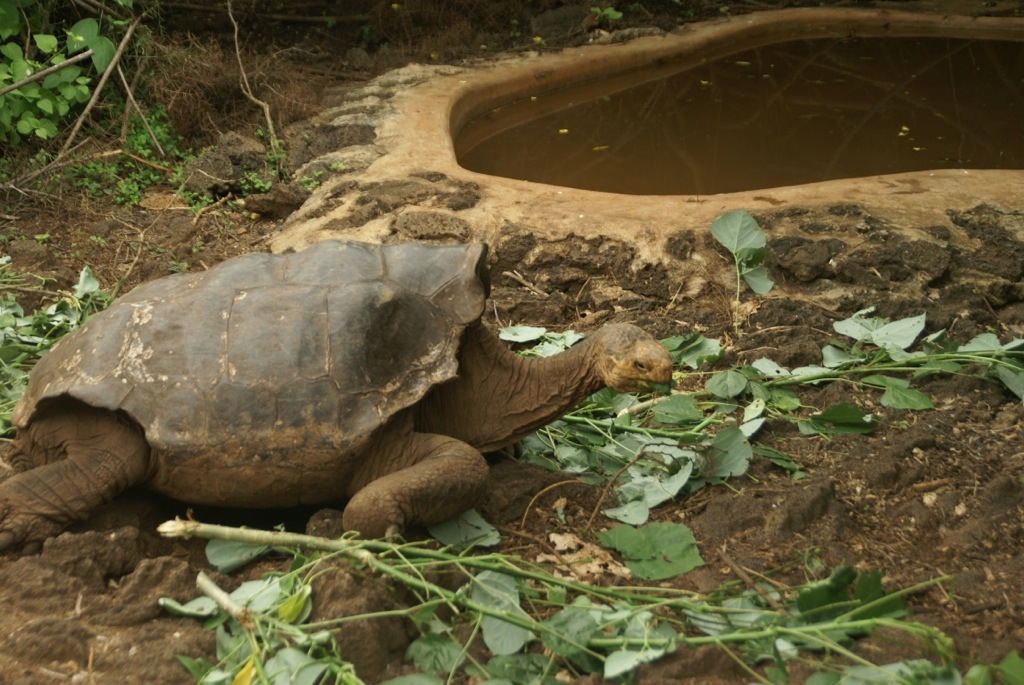
Pirates, buccaneers and sailors over the centuries have used the Galapagos as place to restock their boats. The Giant Tortoises were an ideal source of fresh meat, as they can live for a year without food or water. This not only decimated the tortoise populations on some islands but also mixed them up as smaller specimens were abandoned on different islands when swapped for meatier relatives. As well as breeding them the Centre has been making sure the right tortoises are on the right islands.
The captain told us to expect a rough night's sail to Isabela Island and we all hunkered down early for the night dosed up with sea sickness pills, we woke up delighted and refreshed after a calm night.
The larva fields of Isabela are stark and empty only punctuated with green lagoons which are home to Greater Flamingos.

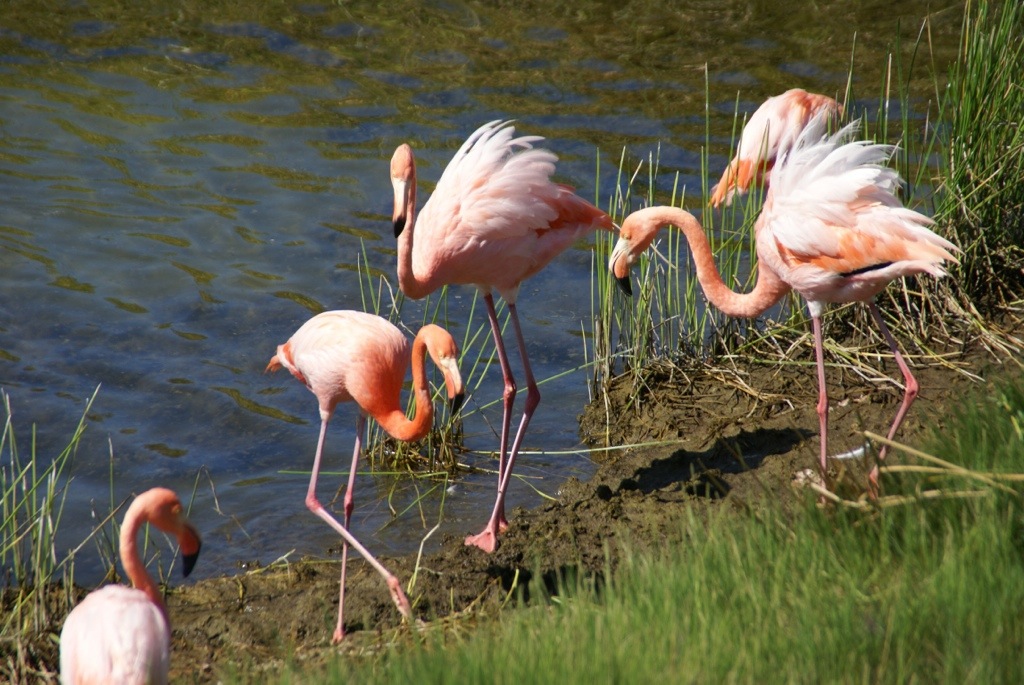
Snorkelling from a small boat we saw many Green Pacific Turtles, bright fishes and even a Flightless Cormorant diving for fish. Further around the island is covered with short trees and grasses, an ideal environment for tortoises, land iguanas and many, many birds.
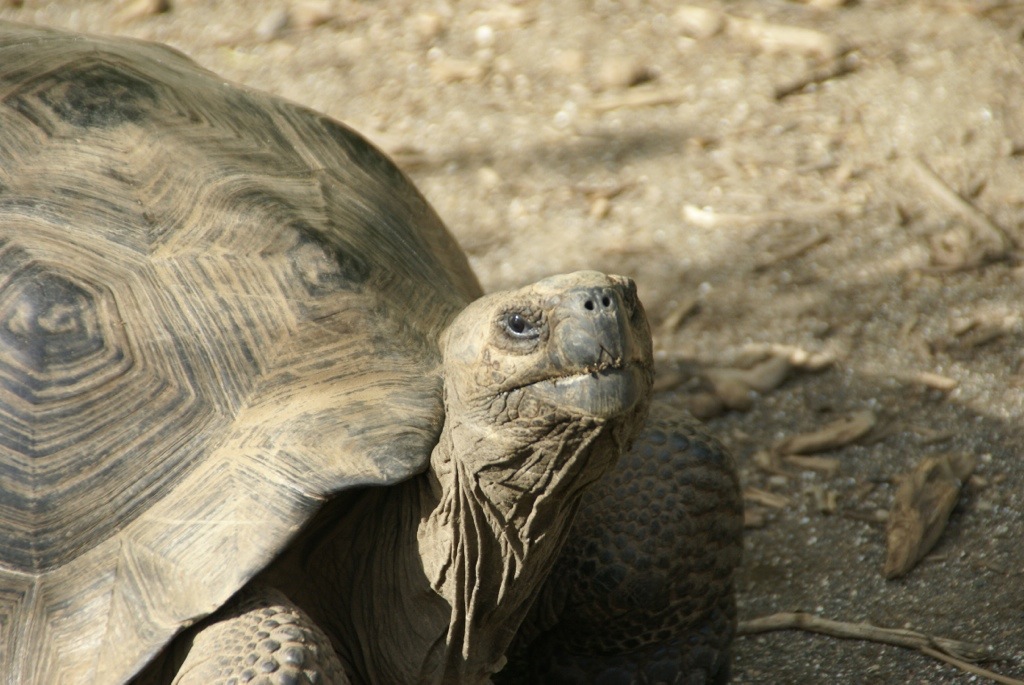
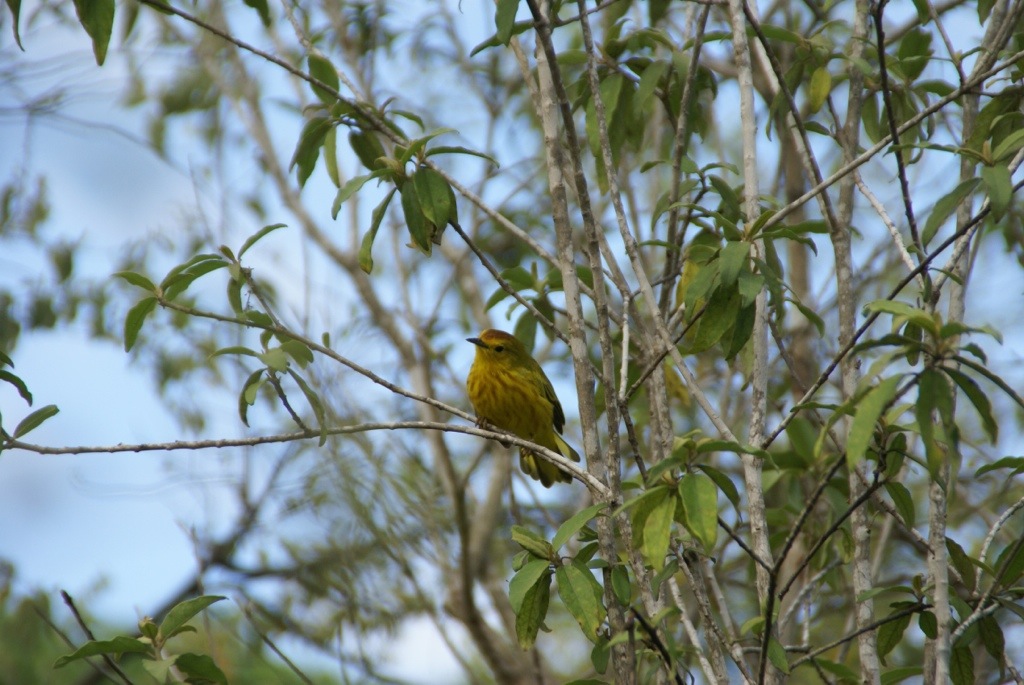
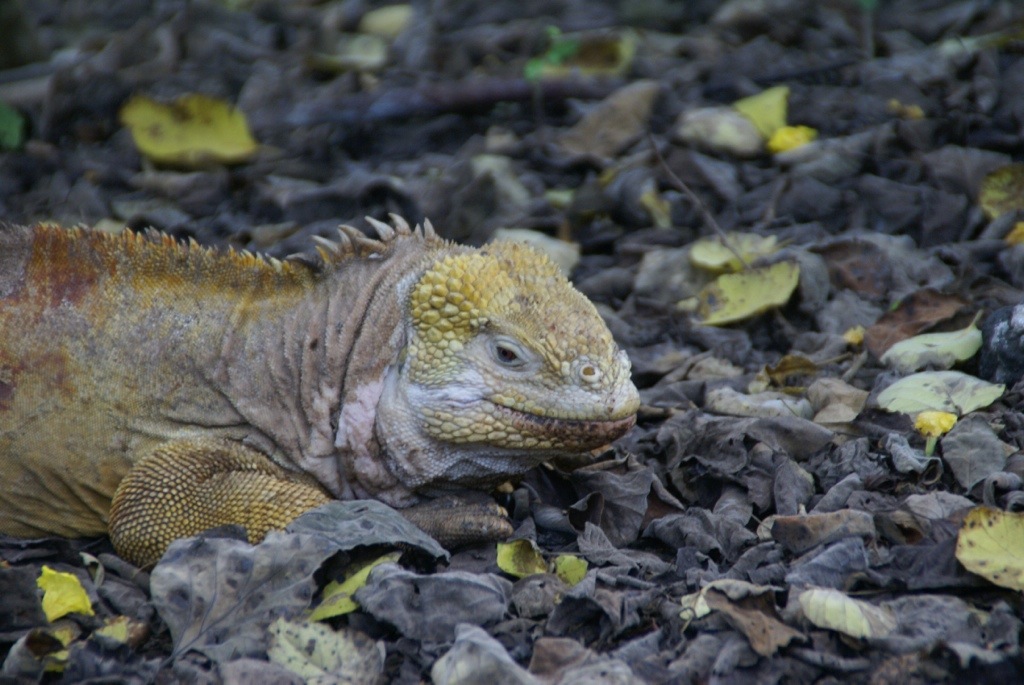
One thing that really strikes us about these islands is the lack of fear that all the species seem to have for humans. Being a national park, tourists are kept to a restricted area, always have to be accompanied by a guide and have to behave in a low impact way but it amazes us at how unconcerned everything seemed about our presence. The famed Galapagos Finches flited from branch to branch just above our heads, tortoises continued on their path past us and sea lions didn't even acknowledge our presence when we had to squeeze past them as they were sunning themselves on boat landing platforms. The rule is that we had to stay at least 2m from the animals but no one seems to have told the animals that. A tortoise came lumbering out of the bushes just feet from where Steve and the girls were standing and seemed very curious about what type of creatures they might be.
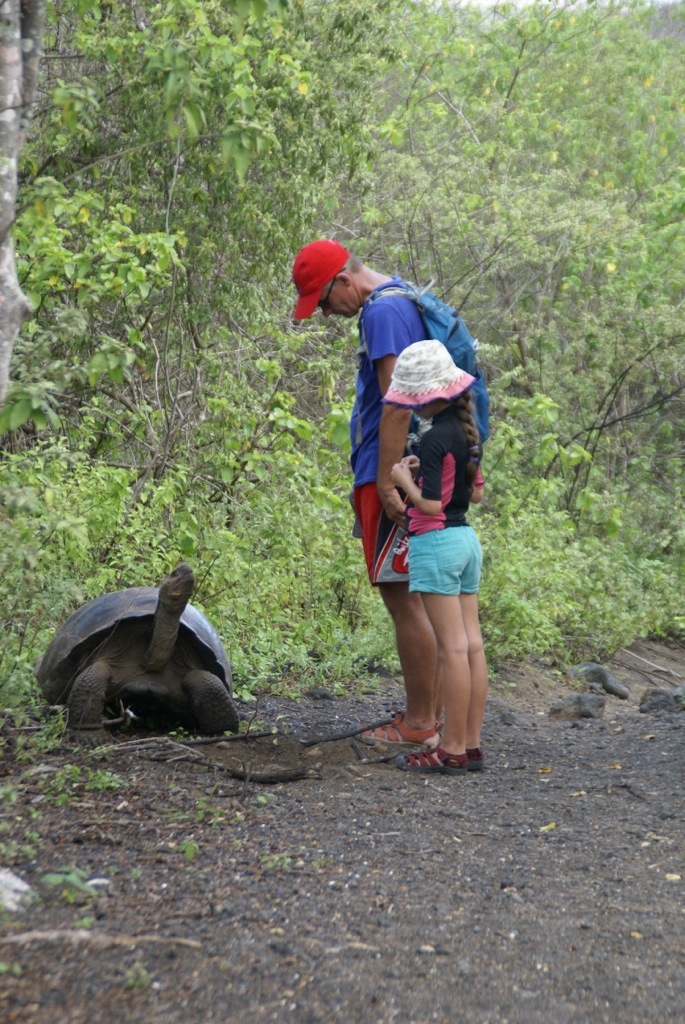
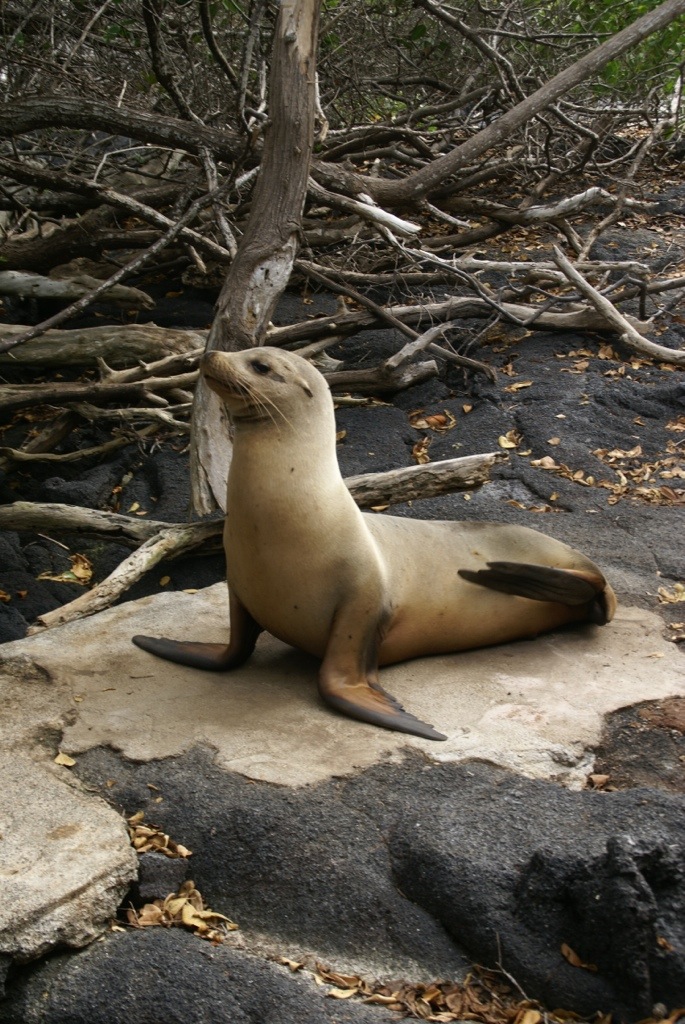
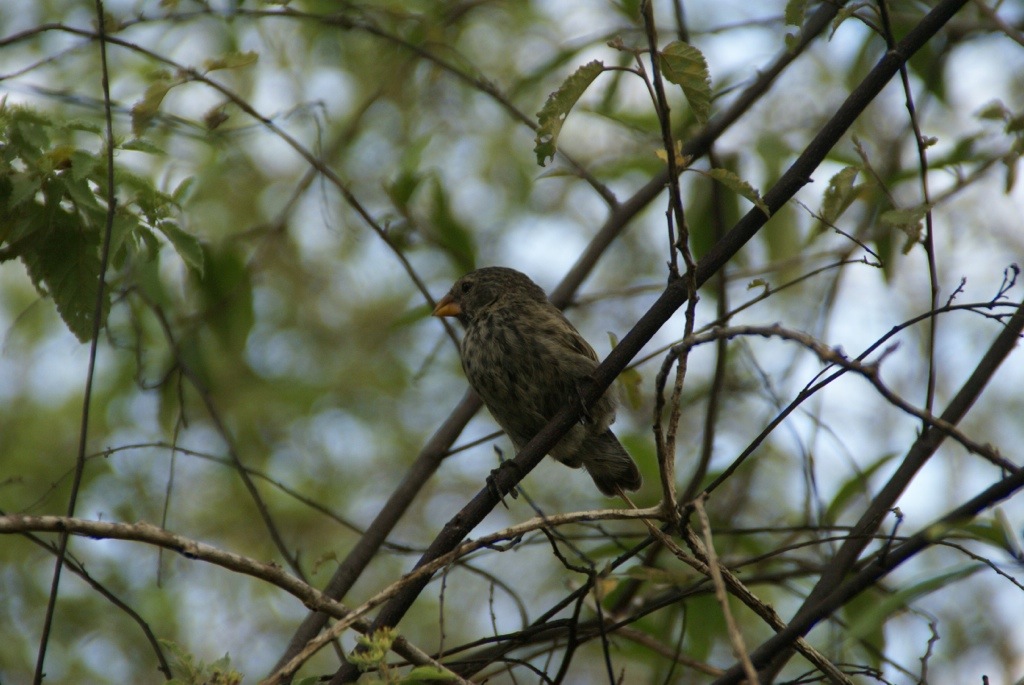
Down on the shore the following day still on Isabela, were two of my favourite species: the brightly coloured Sally Lightfoot Crabs and the Marine Iguanas.
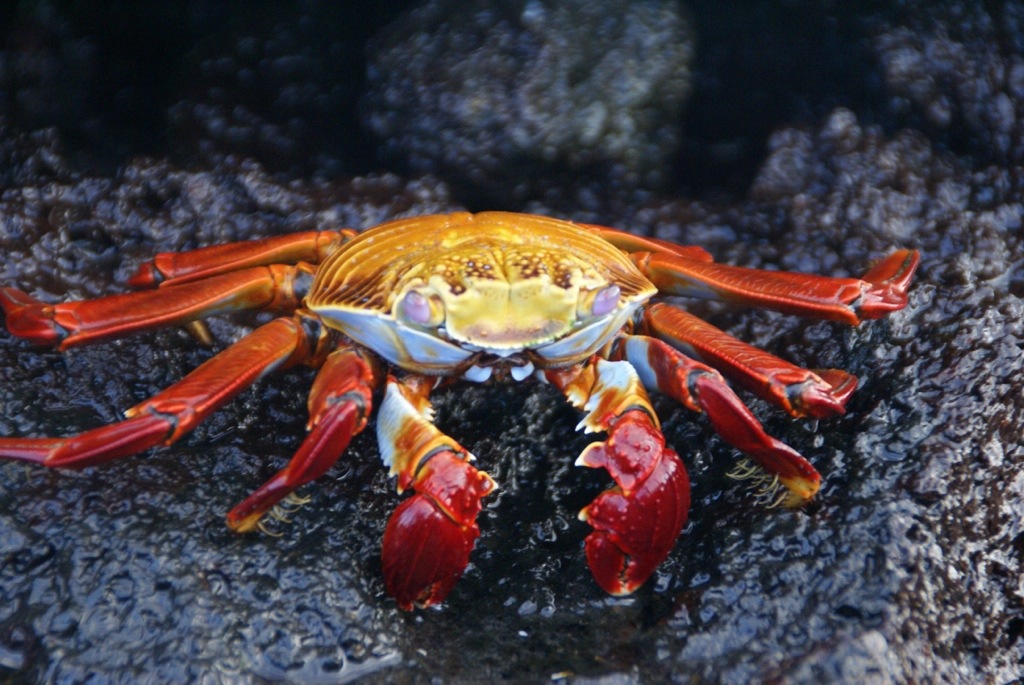
Marine Iguanas are a completely different species from their land-based ancestors. Millions of years ago in South America, after heavy rain, patches of vegetation were swept into rivers and out to sea. In that vegetation, scientists believe, were Land Iguanas. Being reptiles they could survive for a long time without water or much food and so were able to make the 1000km plus journey across the Pacific. Eventually some were washed up on the Galapagos Islands. With little vegetation available on these larva-field filled volcanic islands, some of the arrivals turned to sea weed to survive. Over millions of years they have evolved to have shorter snouts, more paddle like tails for swimming and strong claws for climbing the rocks. The larger ones dive down into the crashing seas to get to the algae growing on submerged rocks. As iguanas are cold blooded animals, they have to return to the rocks regularly to bask in the warm sun. They are now black, so they can absorb more warmth. As for the dangerous built up of salt from the seawater, they've evolved to sneeze it out. Passing a colony of Marine Iguanas is a bit like being in a doctor's waiting room in November with a continuous stream of sneezes assaulting you.
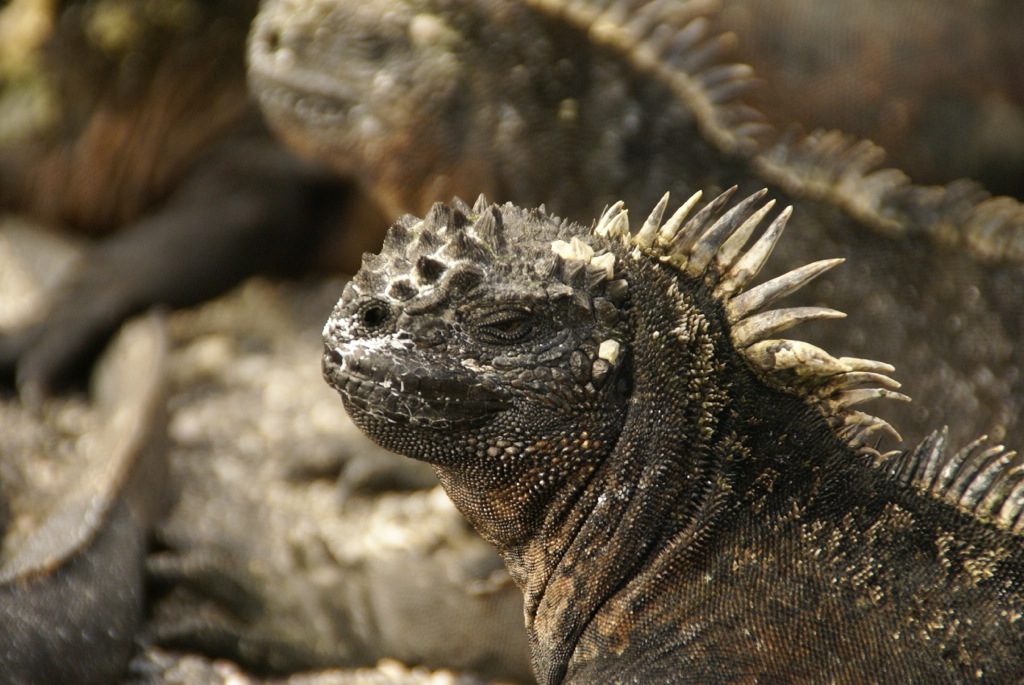
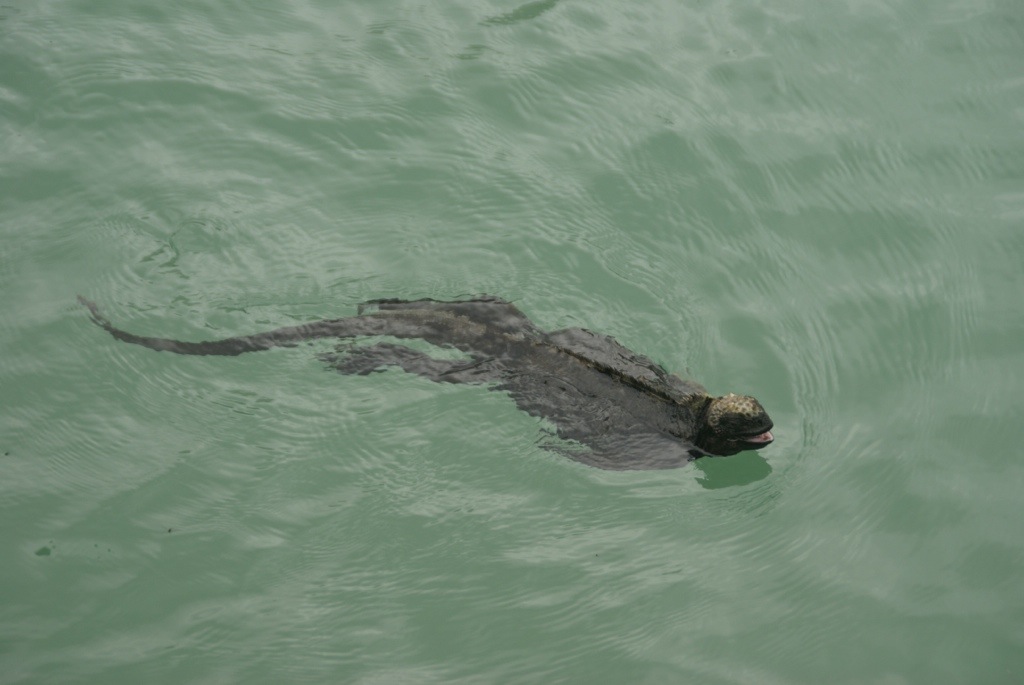
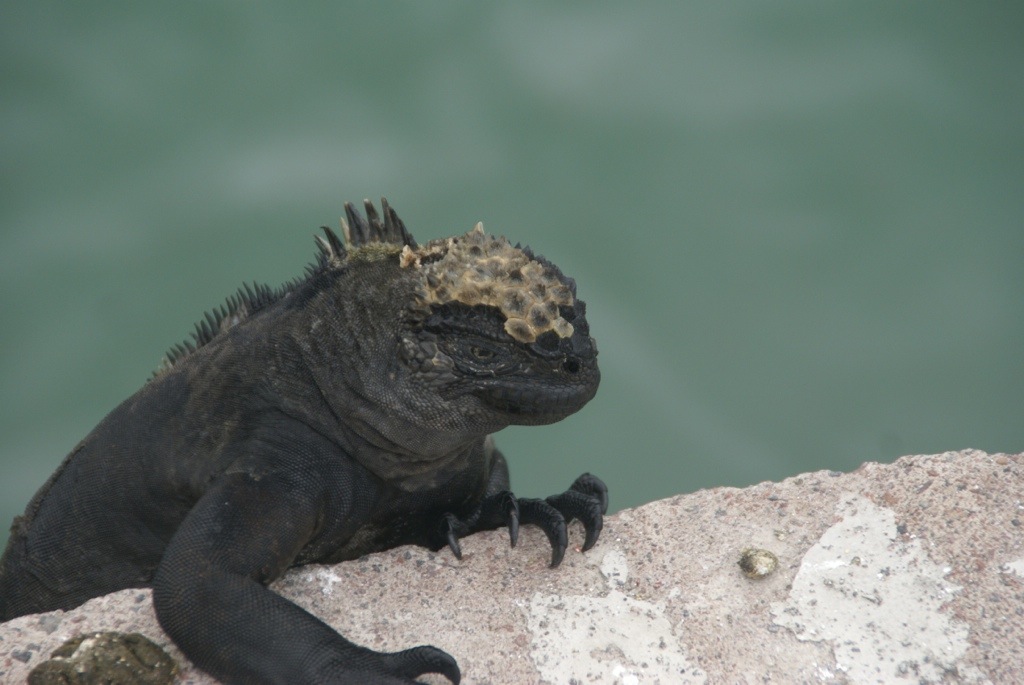
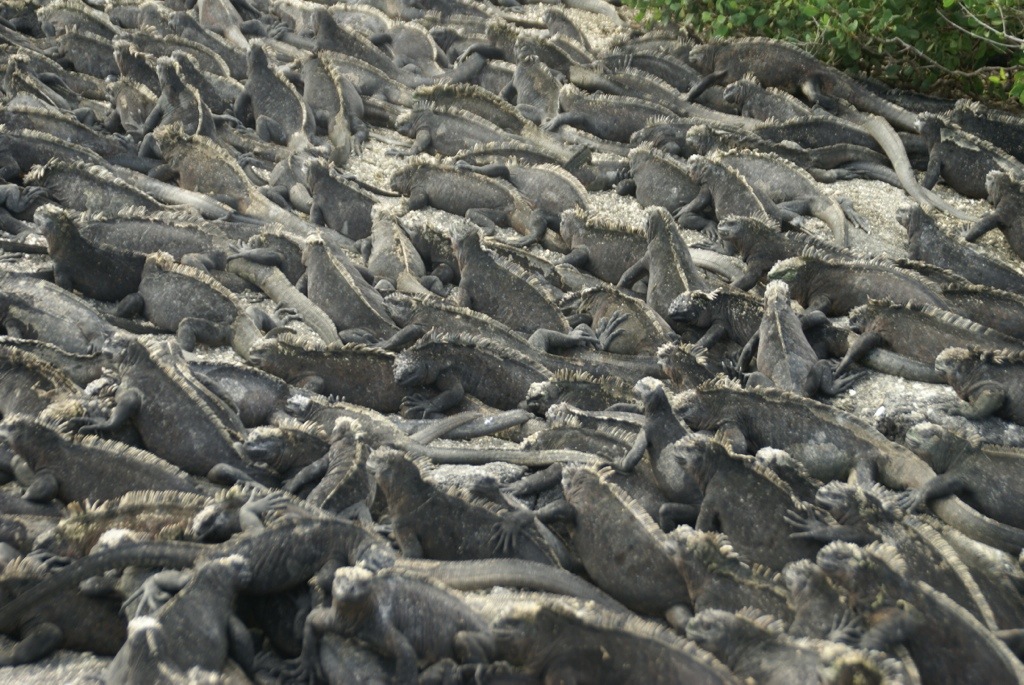
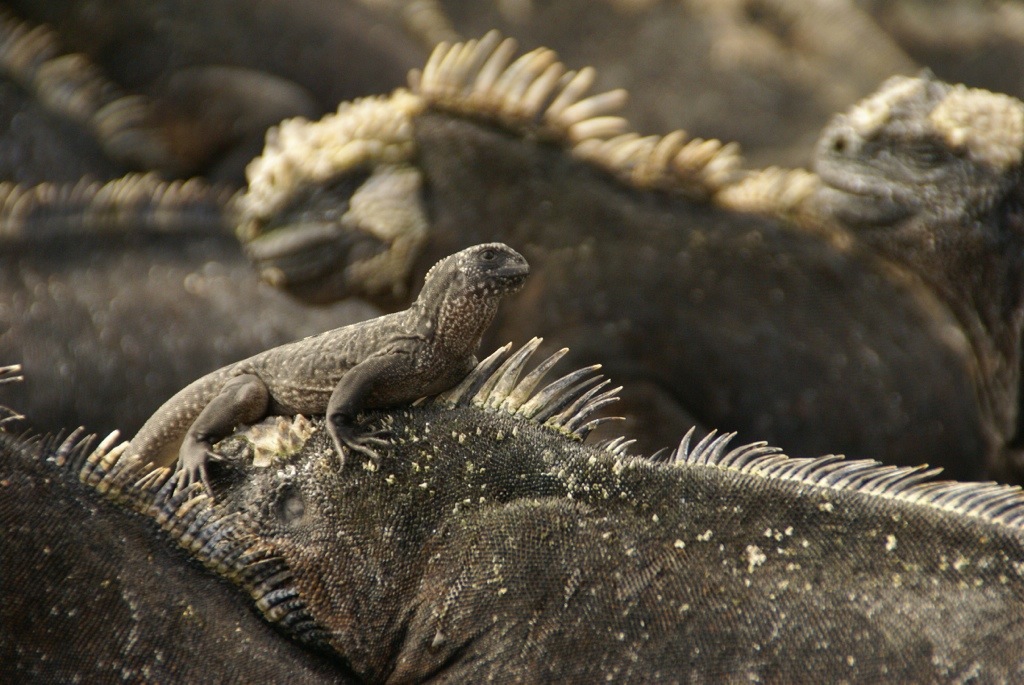
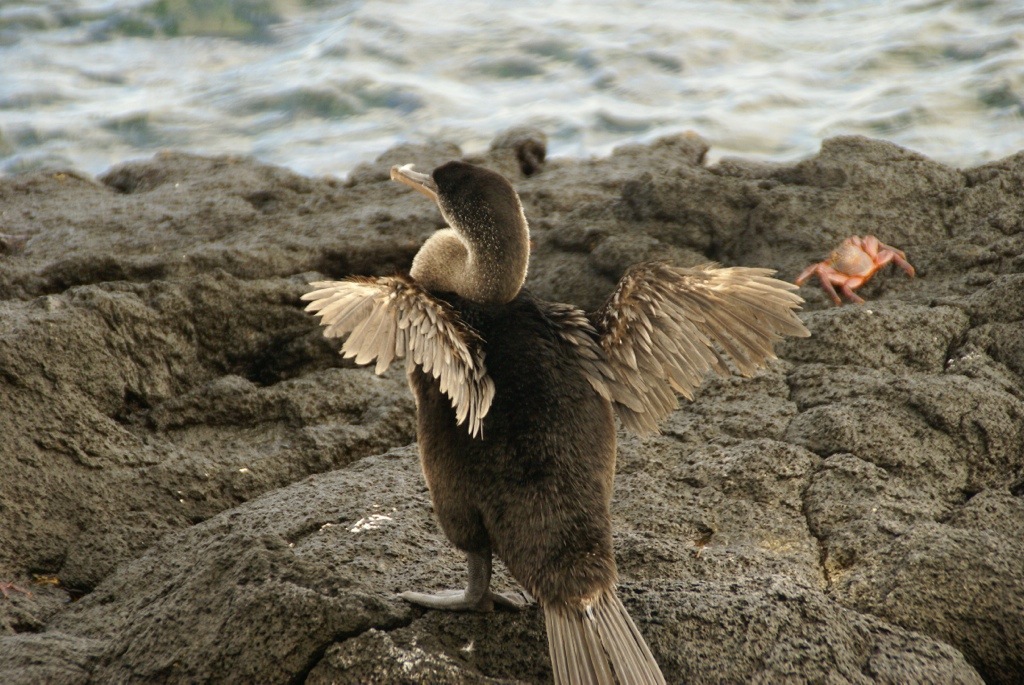
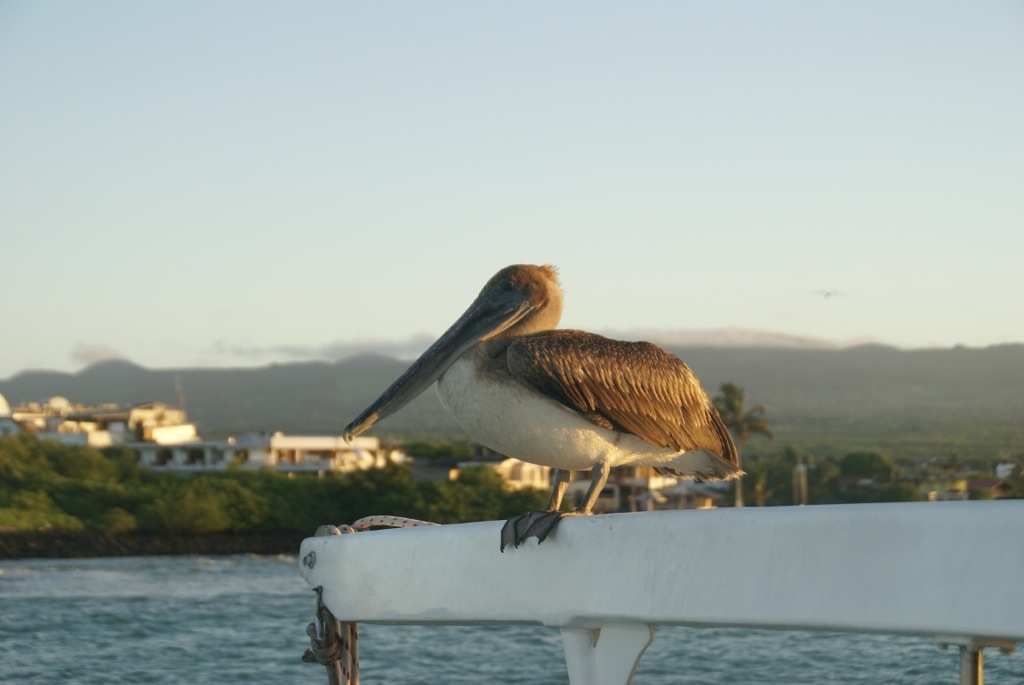

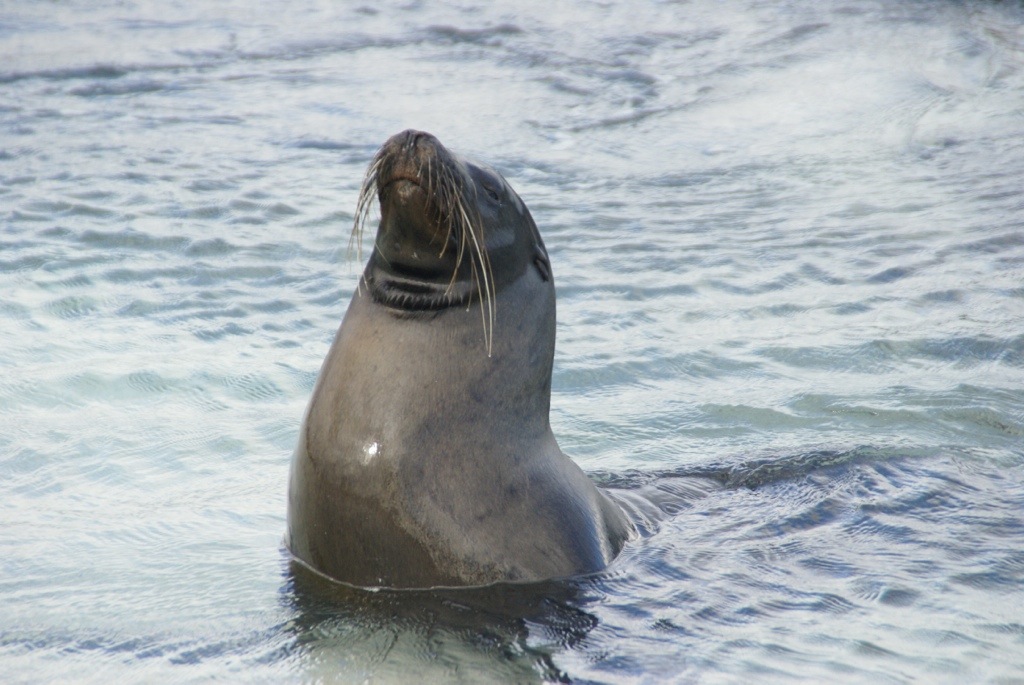

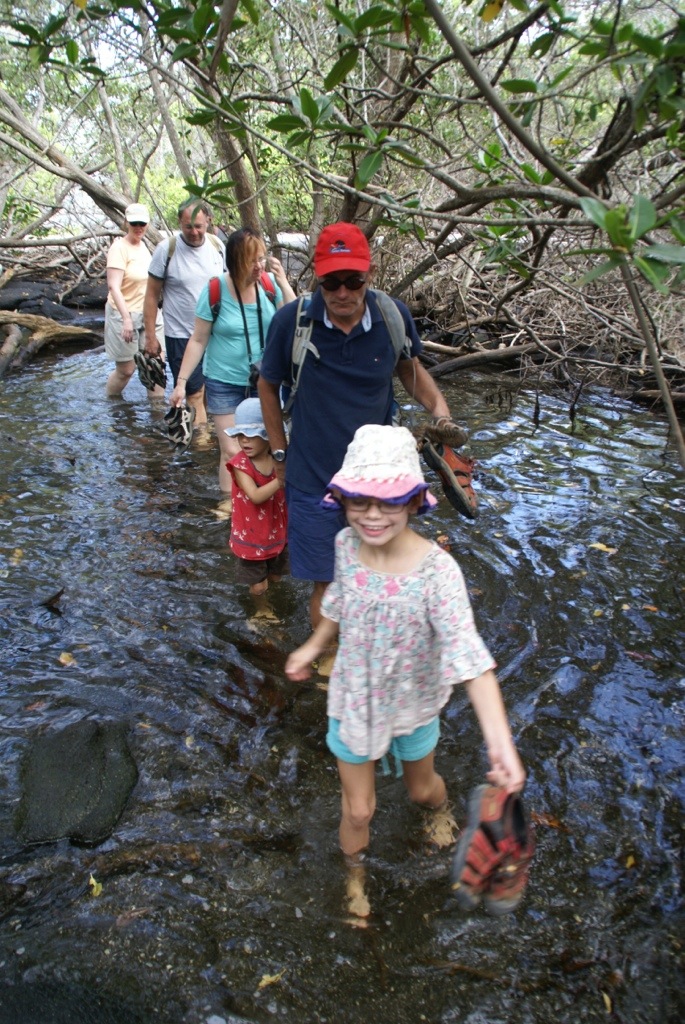
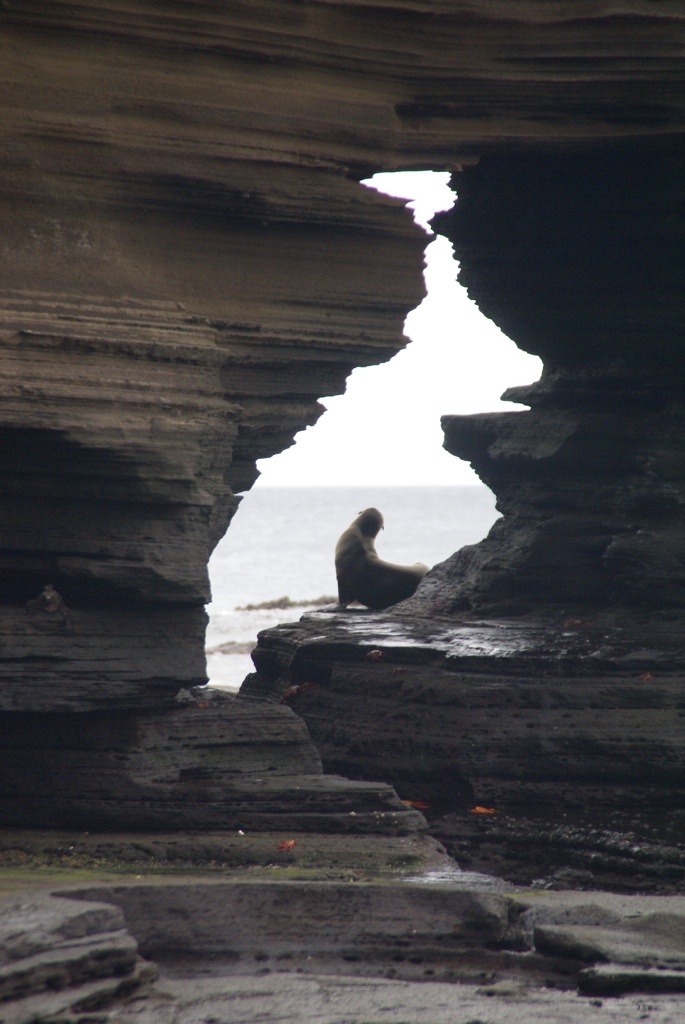
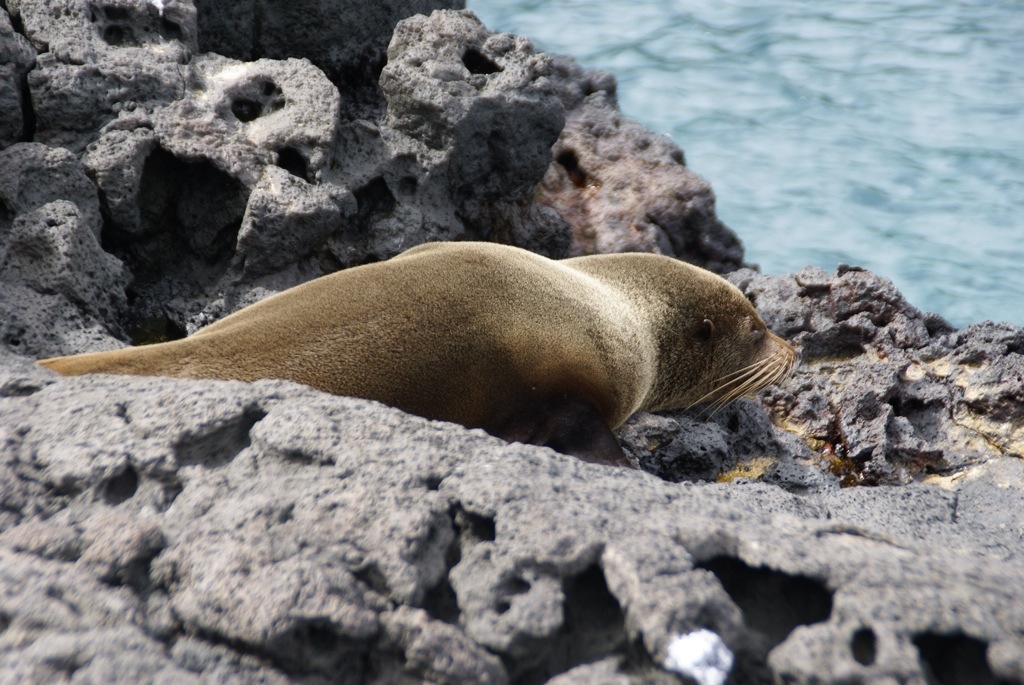 Snorkelling again was great as the water was so clear and there were great viewings of turtles beneath the surface of the water. Unfortunately as Alisha's underwater camera had stopped working we did not have any photos.
The afternoon followed a similar pattern of first viewing wildlife on land and then going snorkelling. In between all this, the crew served great meals on the boat. We had a full breakfast, a large lunch, dinner and snacks served after each activity. Fortunately we were doing lots of exercise with all the walking and snorkelling so were using up all the calories. In fact the trip was quite tiring with all the activity that we were usually tucked up in bed by 9pm.
That evening it was only a short sail to Rabida Island. Where the next morning we were able to see the Galapagos Hawk close up.
Snorkelling again was great as the water was so clear and there were great viewings of turtles beneath the surface of the water. Unfortunately as Alisha's underwater camera had stopped working we did not have any photos.
The afternoon followed a similar pattern of first viewing wildlife on land and then going snorkelling. In between all this, the crew served great meals on the boat. We had a full breakfast, a large lunch, dinner and snacks served after each activity. Fortunately we were doing lots of exercise with all the walking and snorkelling so were using up all the calories. In fact the trip was quite tiring with all the activity that we were usually tucked up in bed by 9pm.
That evening it was only a short sail to Rabida Island. Where the next morning we were able to see the Galapagos Hawk close up.
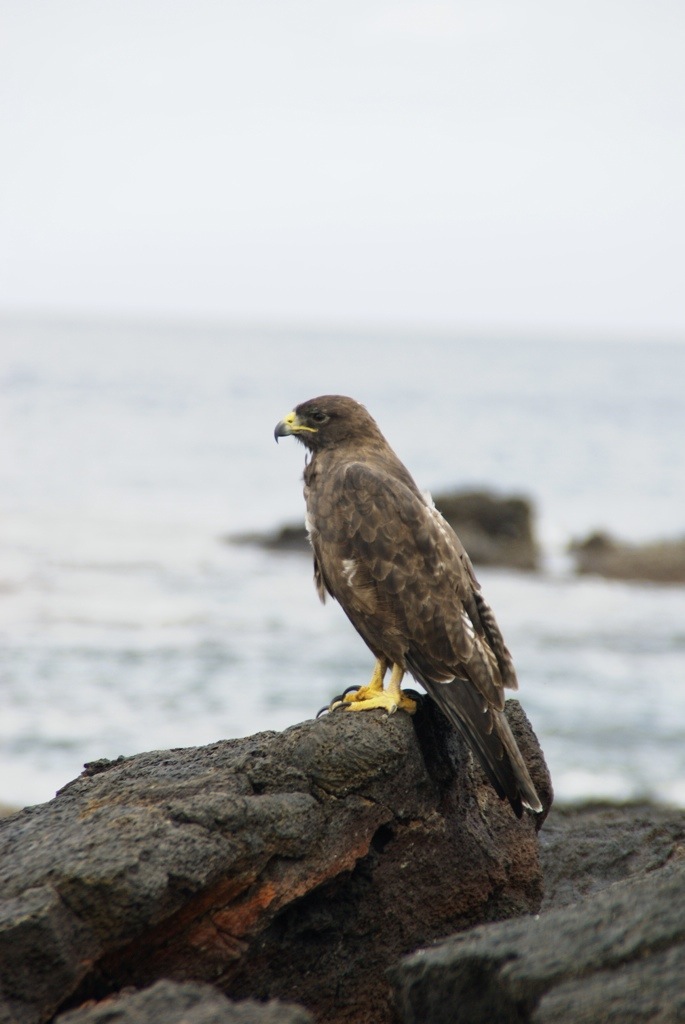 When we went snorkelling we were also fortunate to see a White Tipped Shark swim underneath us.
That afternoon we sailed back to Isla Santiago. The focus for the hike that afternoon was the amazing lava flows that covered that part of the Island. Whilst they looked fairly recent they in fact happened over a 100,000 years ago. The shape and patterns of the lava were amazing and it was a completely different world totally devoid of vegetation.
When we went snorkelling we were also fortunate to see a White Tipped Shark swim underneath us.
That afternoon we sailed back to Isla Santiago. The focus for the hike that afternoon was the amazing lava flows that covered that part of the Island. Whilst they looked fairly recent they in fact happened over a 100,000 years ago. The shape and patterns of the lava were amazing and it was a completely different world totally devoid of vegetation.
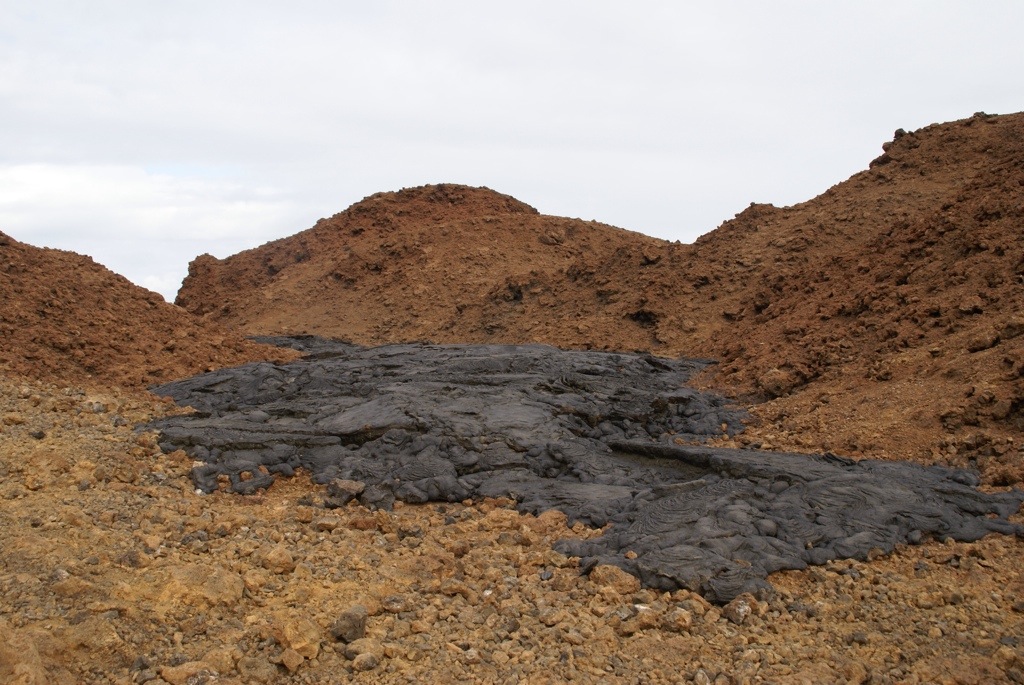
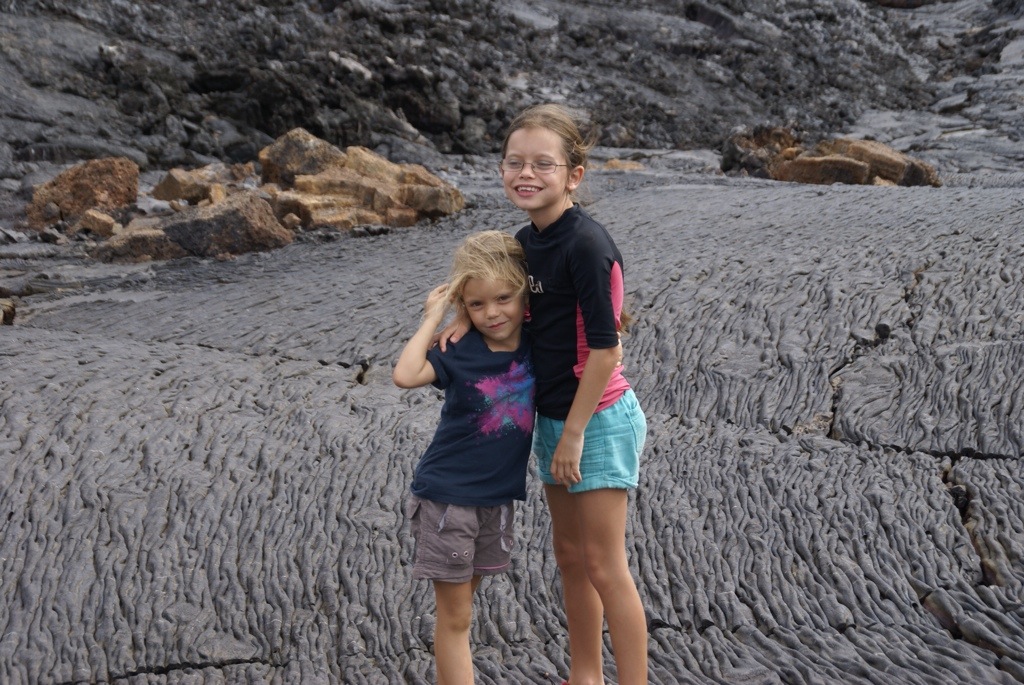
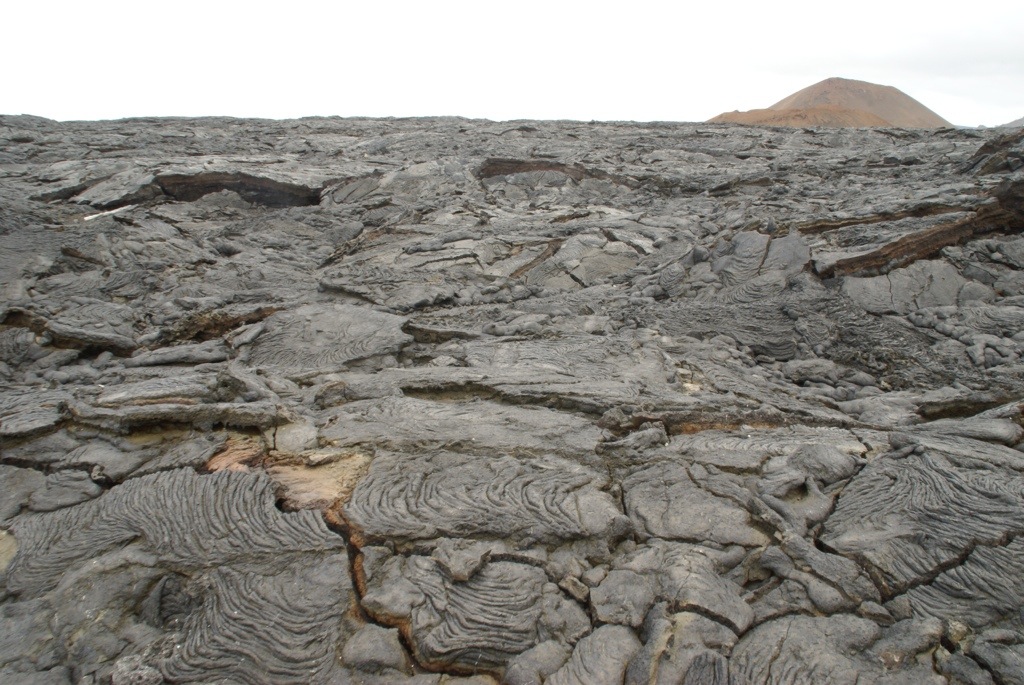
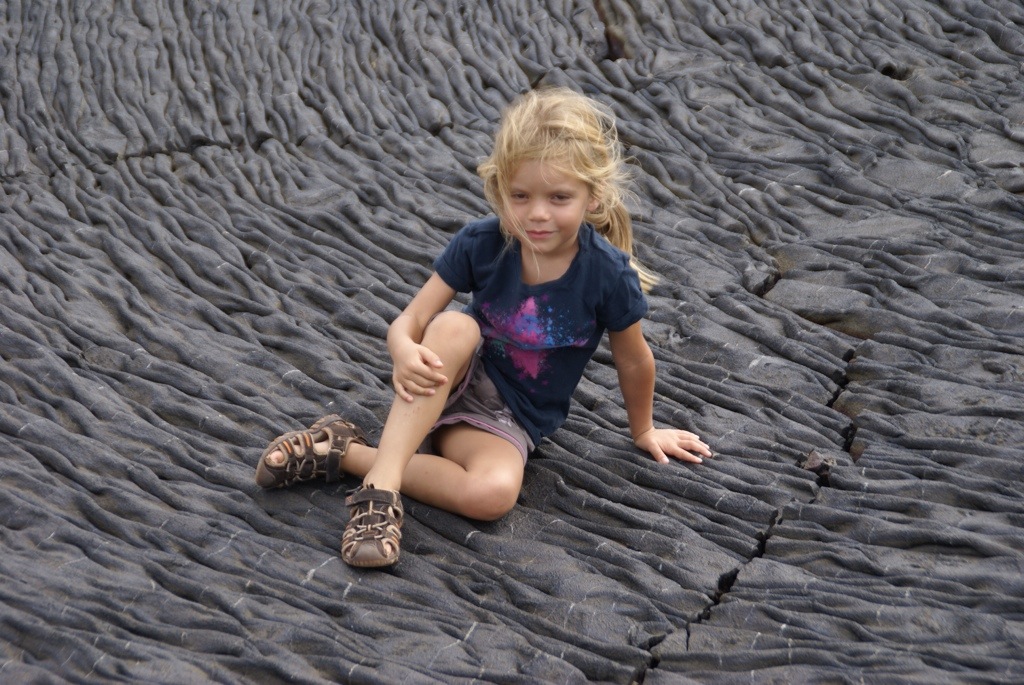 The lava was difficult to walk on and unfortunately one of our party fell on the lava which was very sharp and suffered a bad cut to her leg. The guide rushed back to the boat and bandages were applied. Unfortunately the cut was bad and it needed stitches. Fortunately we were moored up in the bay with some other ships, one of which was a larger cruise liner that had a mini hospital on board. They were able to stitch the cut up.
We were due to go snorkelling that afternoon but with the accident this was cancelled. As everyone was pretty worn out this was not a problem and we spent the time on top of the boat admiring the magnificent scenery and enjoying a few beers as the sun went down.
The lava was difficult to walk on and unfortunately one of our party fell on the lava which was very sharp and suffered a bad cut to her leg. The guide rushed back to the boat and bandages were applied. Unfortunately the cut was bad and it needed stitches. Fortunately we were moored up in the bay with some other ships, one of which was a larger cruise liner that had a mini hospital on board. They were able to stitch the cut up.
We were due to go snorkelling that afternoon but with the accident this was cancelled. As everyone was pretty worn out this was not a problem and we spent the time on top of the boat admiring the magnificent scenery and enjoying a few beers as the sun went down.
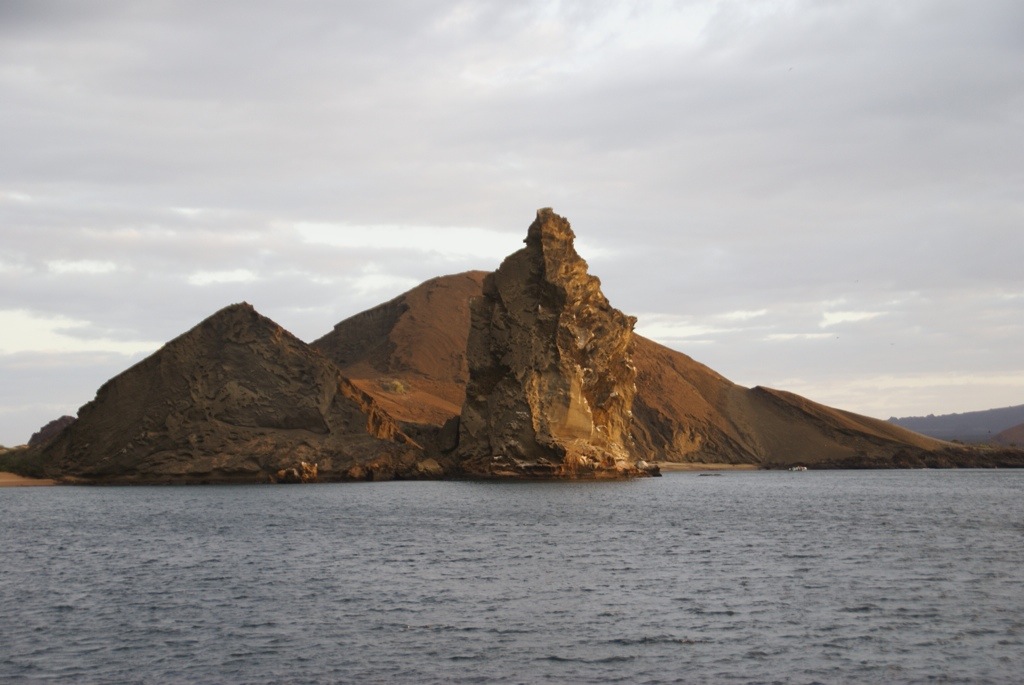
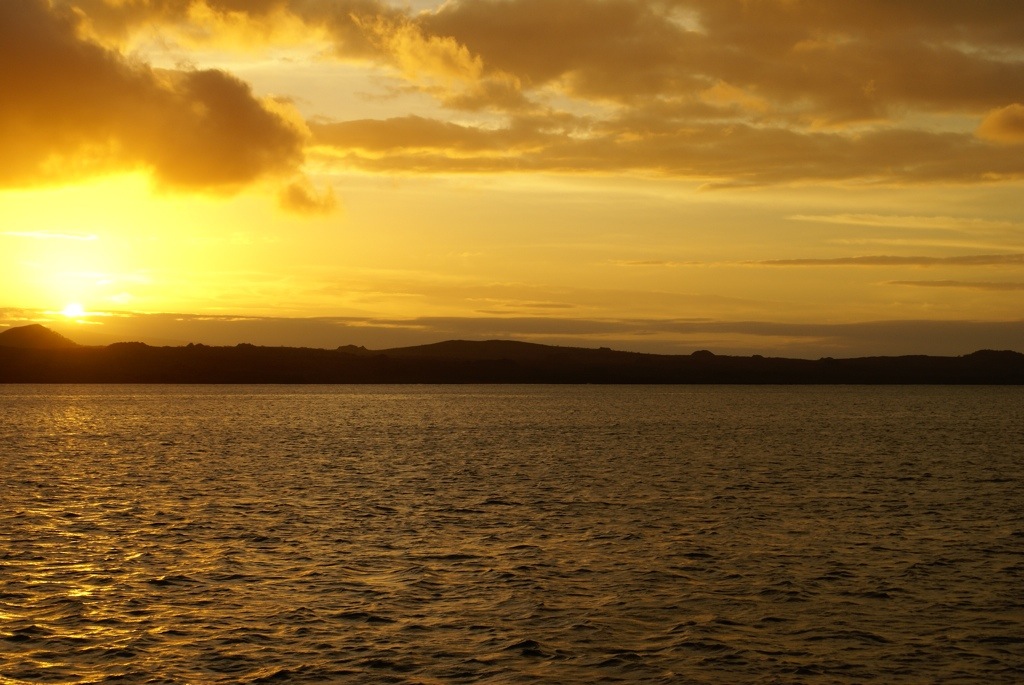 That evening we had a long sail to Genovesa Island. Genovesa is famed for the prolific bird life that can be found on it and when we awoke anchored close to the cliffs we could see and hear frigate birds, boobies, pelicans and gulls in great numbers. On our hike that morning we saw a number of species of bird that we had not seen before. Nazca and Red Footed Boobies were all over the place together with the Magnificent Frigate Birds.
That evening we had a long sail to Genovesa Island. Genovesa is famed for the prolific bird life that can be found on it and when we awoke anchored close to the cliffs we could see and hear frigate birds, boobies, pelicans and gulls in great numbers. On our hike that morning we saw a number of species of bird that we had not seen before. Nazca and Red Footed Boobies were all over the place together with the Magnificent Frigate Birds.
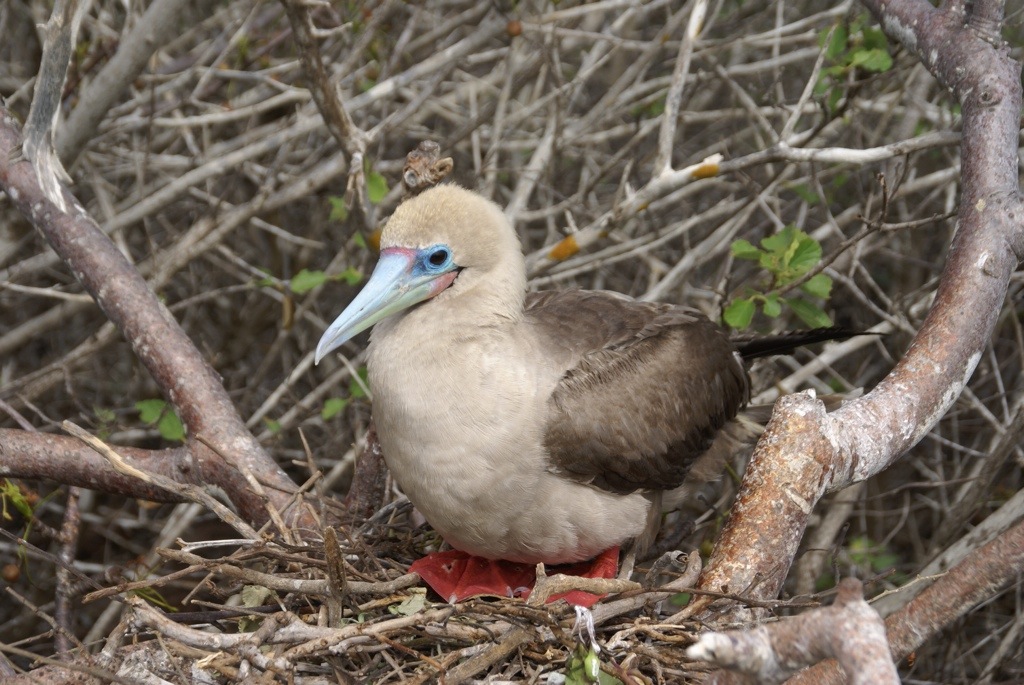
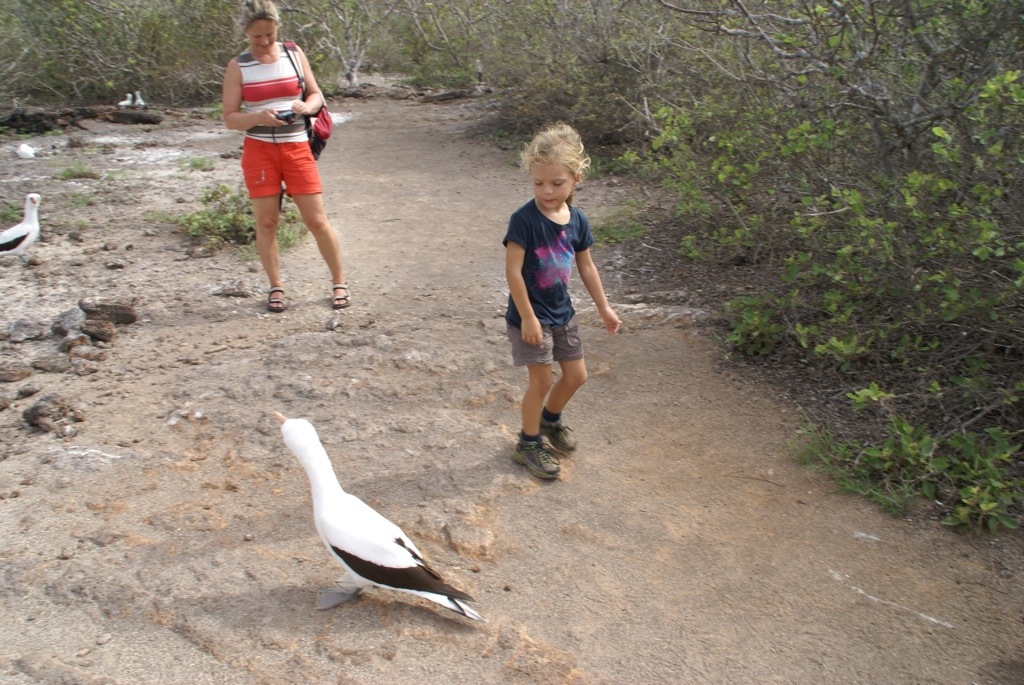
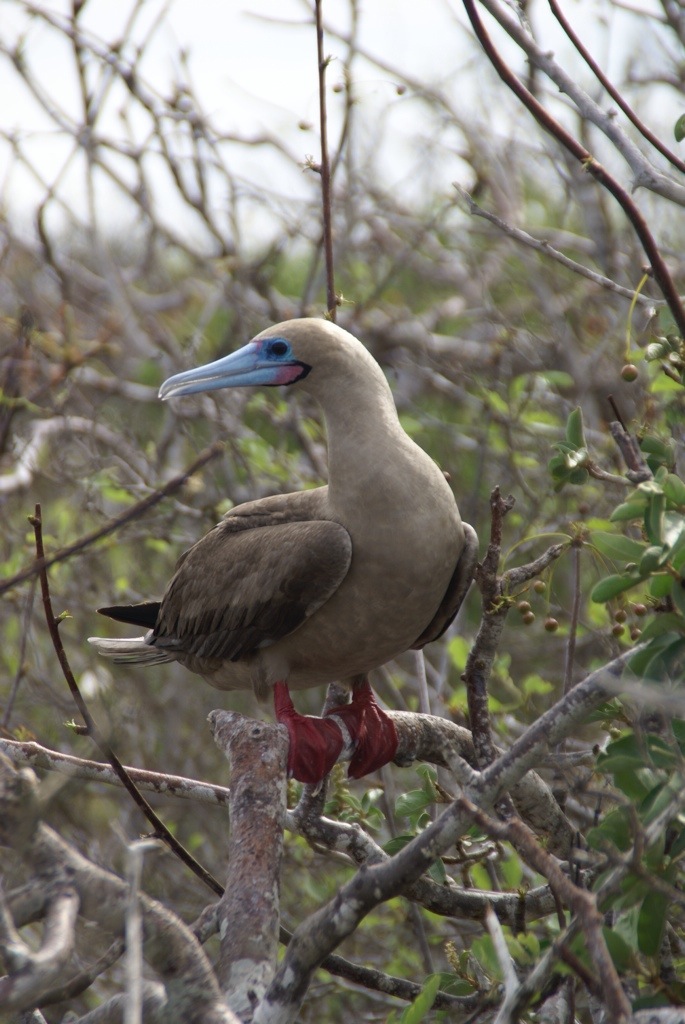
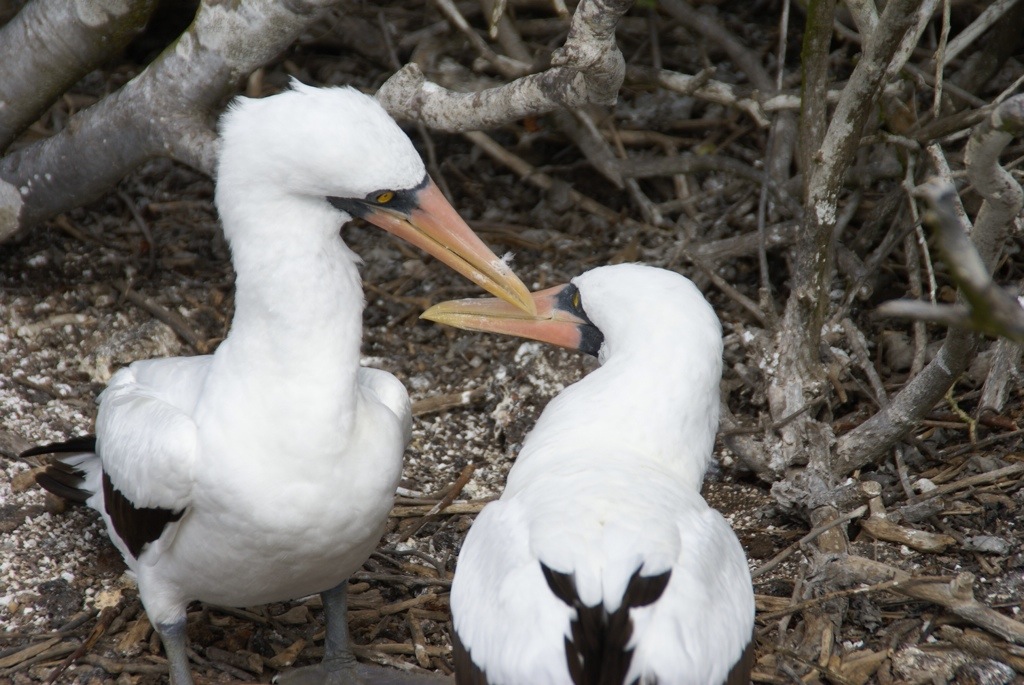 We also saw Storm Petrels skimming across the lava. The Storm Petrels are preyed upon by the Short-Eared Owl which lives in little burrows in the rocks, so we had our eyes peeled for the owls and were rewarded with two sightings.
We also saw Storm Petrels skimming across the lava. The Storm Petrels are preyed upon by the Short-Eared Owl which lives in little burrows in the rocks, so we had our eyes peeled for the owls and were rewarded with two sightings.

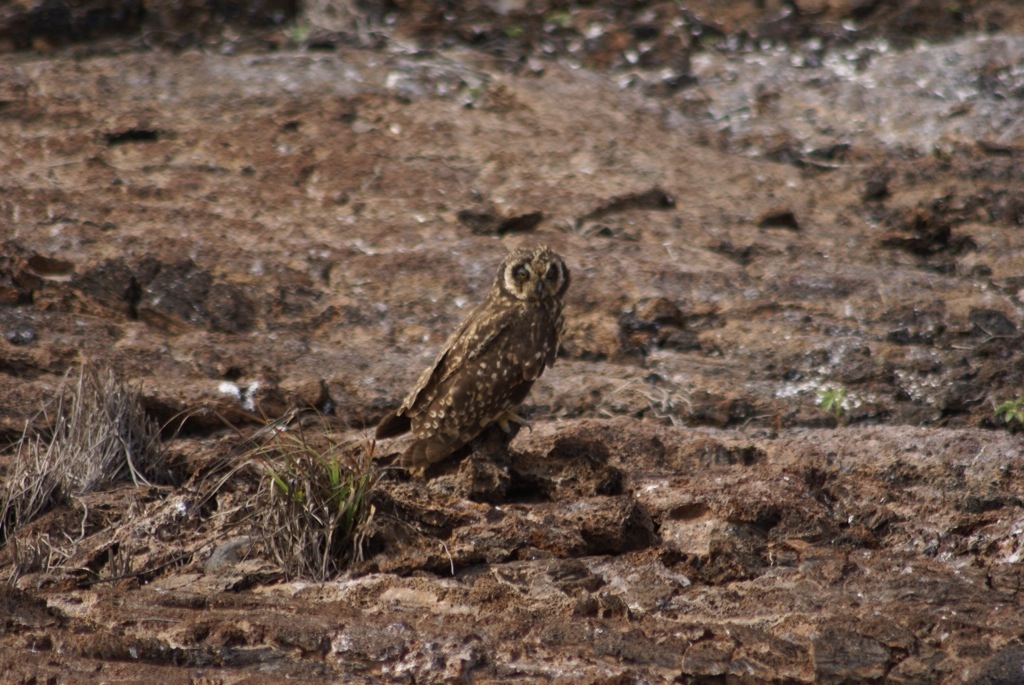 Unfortunately it was too rough to snorkel in the area where Hammerhead Sharks congregate in large numbers, so we had to snorkel along the cliff edge instead where we saw a myriad of different fish but unfortunately no sharks.
As we have commented before we could not believe how fearless the birds were and how close you could get. That afternoon we went on another hike on the island accessed from a lovely sandy beach. After navigating our way past the basking sea lions we had to then navigate ourselves around the birds on the path. They were literally congregated around our feet.
Unfortunately it was too rough to snorkel in the area where Hammerhead Sharks congregate in large numbers, so we had to snorkel along the cliff edge instead where we saw a myriad of different fish but unfortunately no sharks.
As we have commented before we could not believe how fearless the birds were and how close you could get. That afternoon we went on another hike on the island accessed from a lovely sandy beach. After navigating our way past the basking sea lions we had to then navigate ourselves around the birds on the path. They were literally congregated around our feet.
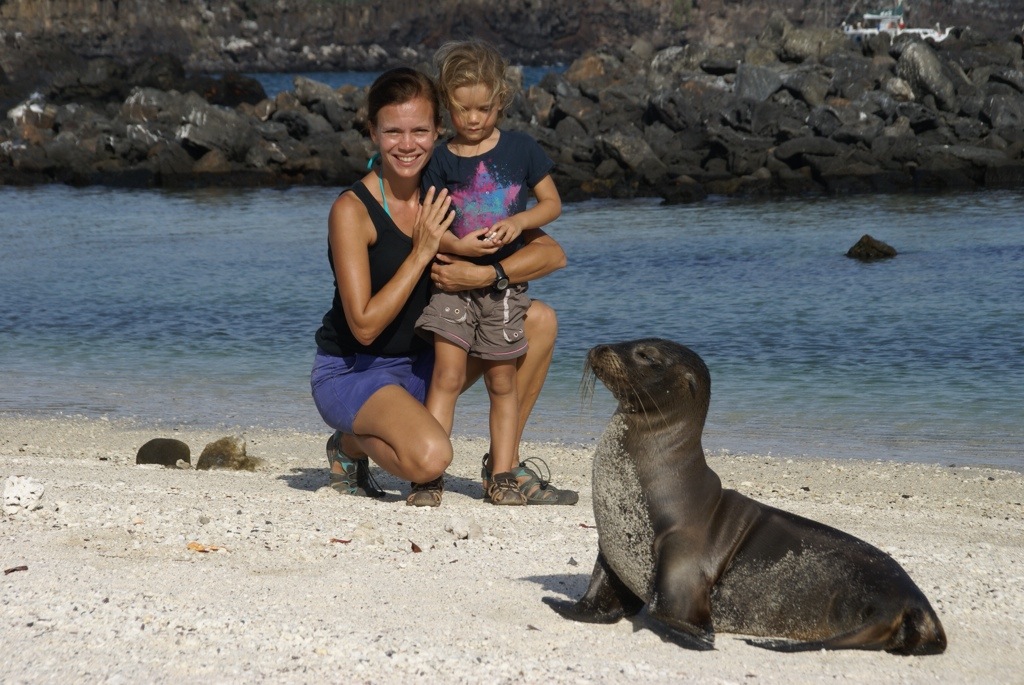
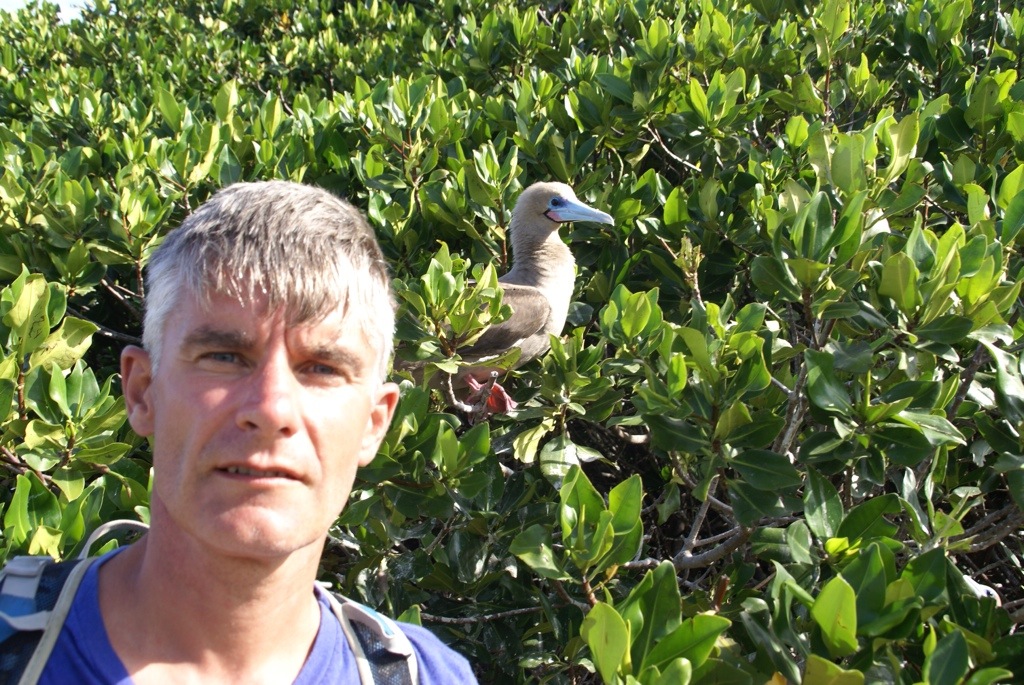
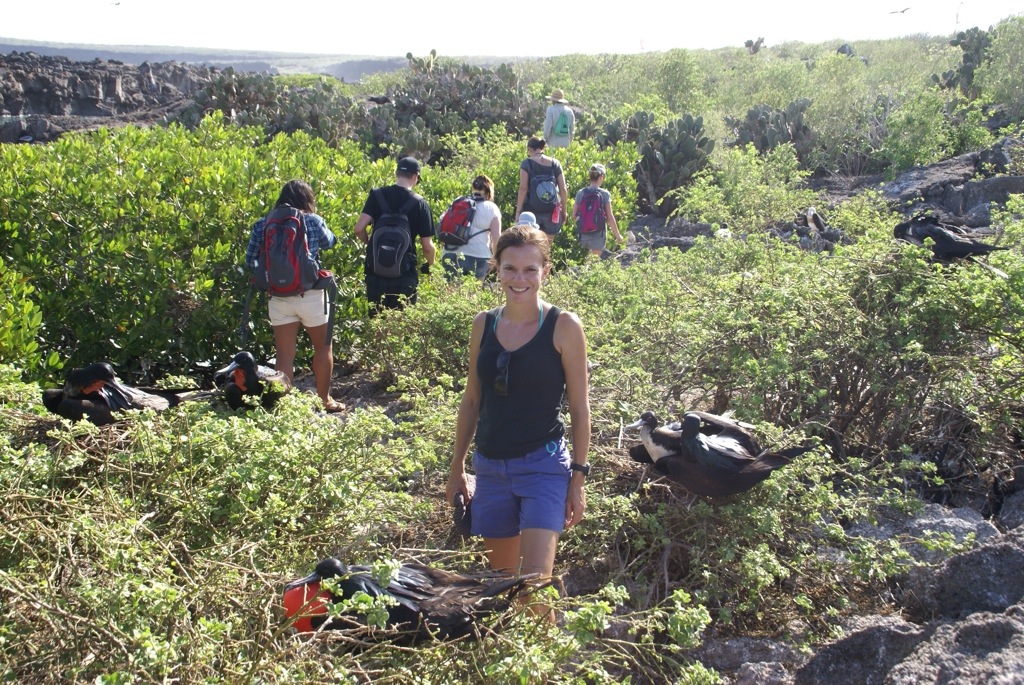 That afternoon we saw some endemic gull species. The Swallow Tailed Gull is the only gull that flies and catches it's food principally at night. We had seen a few following the boat at night but now we could admire them close up.
That afternoon we saw some endemic gull species. The Swallow Tailed Gull is the only gull that flies and catches it's food principally at night. We had seen a few following the boat at night but now we could admire them close up.

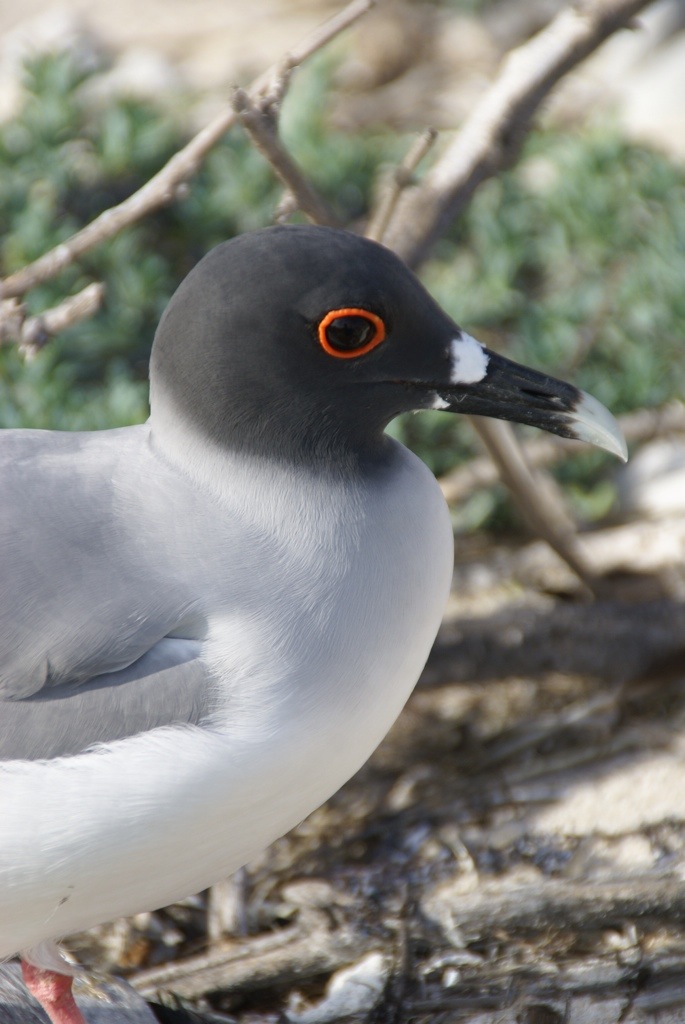 We also saw the Lava Gull which is endemic to the Galapagos and of which there are only about 200 pairs remaining.
We also saw the Lava Gull which is endemic to the Galapagos and of which there are only about 200 pairs remaining.
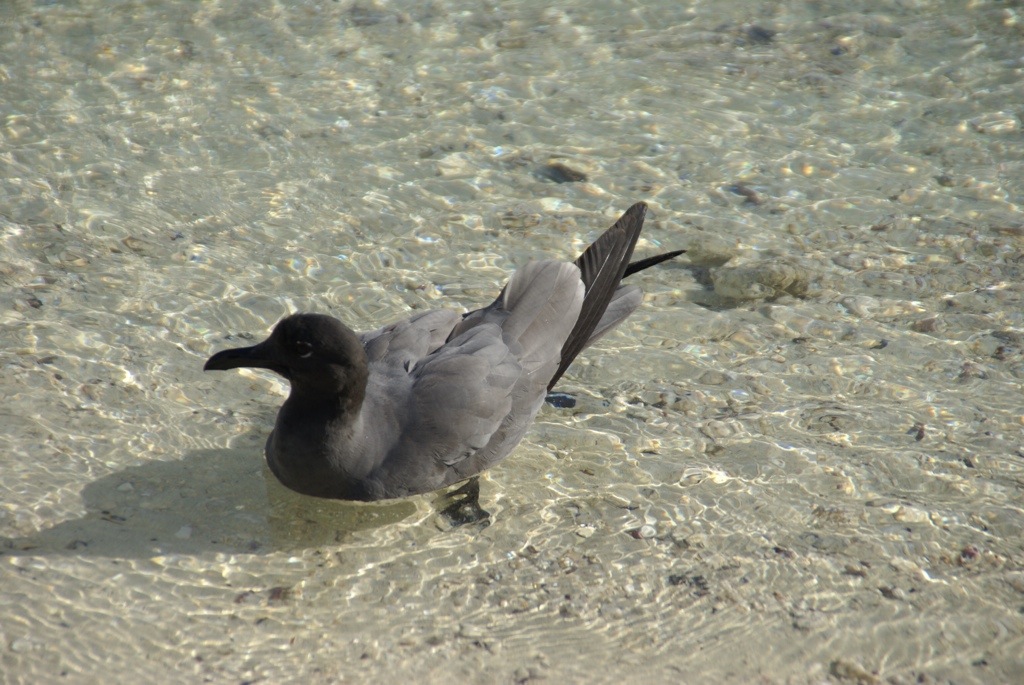 Flying overhead were the beautiful Tropic birds which nest in the cliff walls where they are constantly harassed by the marauding frigate birds.
Flying overhead were the beautiful Tropic birds which nest in the cliff walls where they are constantly harassed by the marauding frigate birds.
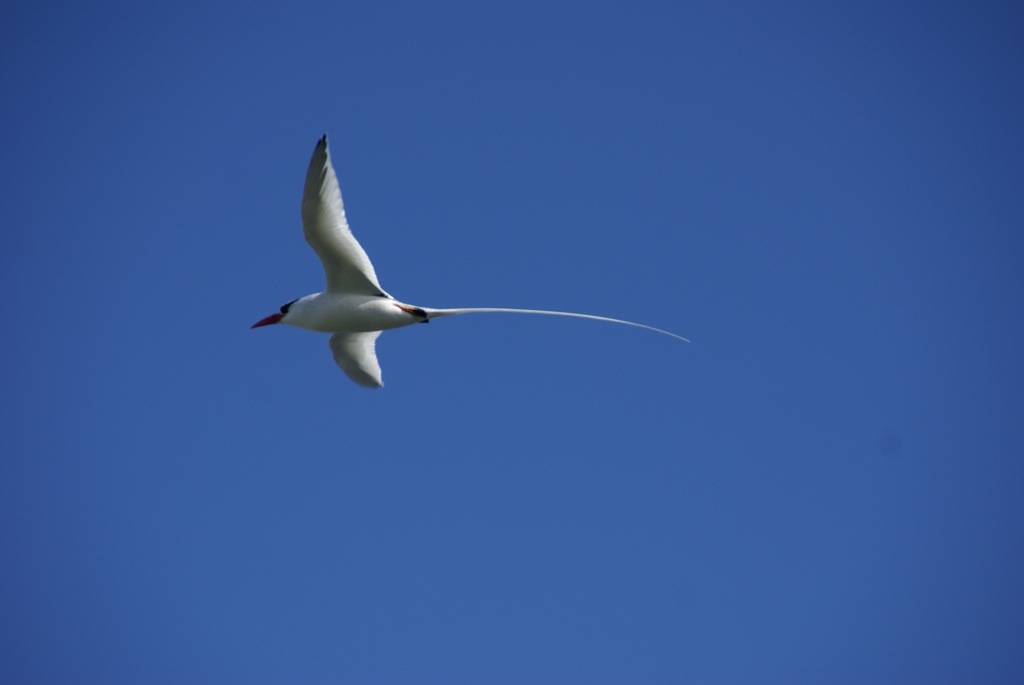
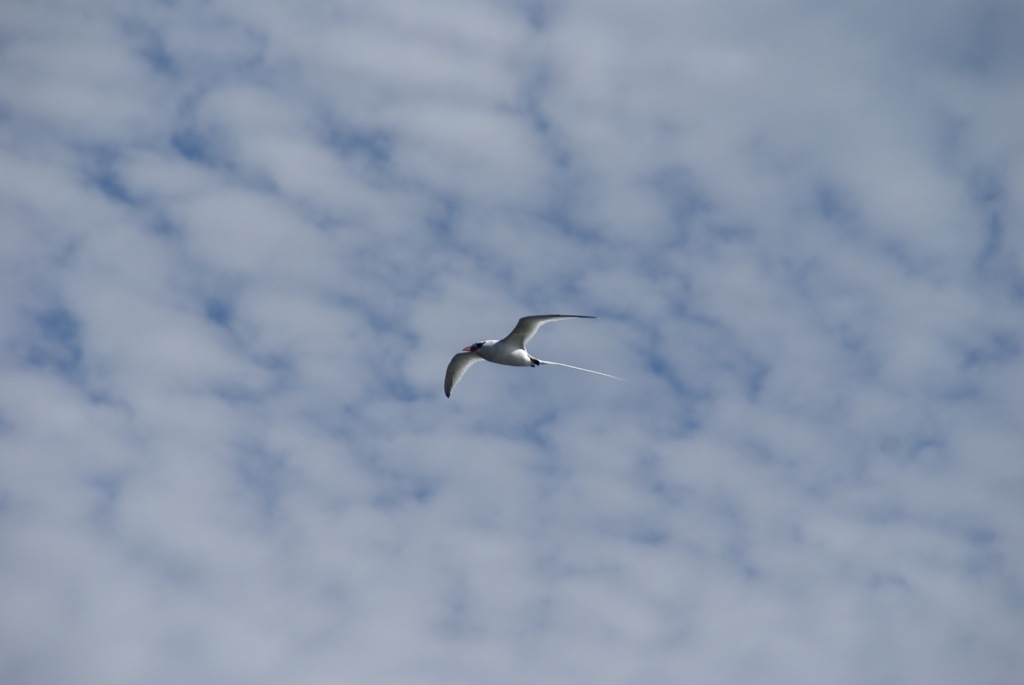 We finished our time on the island with a relaxing swim off the lovely beach, taking care to avoid the sea lions cavorting in the water.
We finished our time on the island with a relaxing swim off the lovely beach, taking care to avoid the sea lions cavorting in the water.
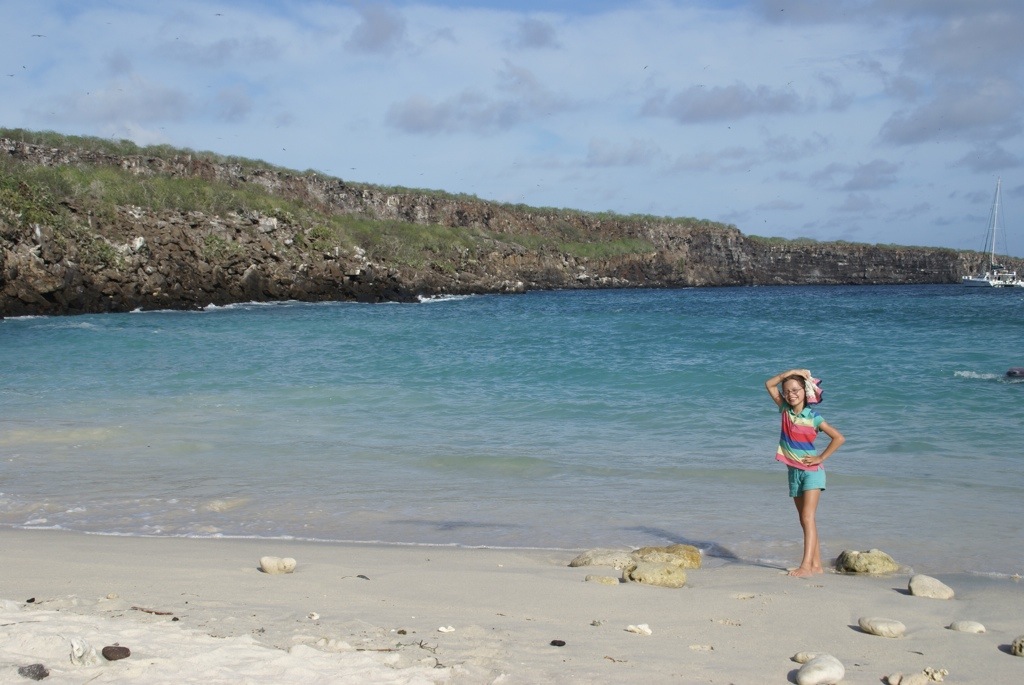 We had been told that the journey back from Genovesa would be the roughest part of the trip, so despite it being the last night everyone was off to bed early. As it happened it was a fairly gentle cruise and we awoke the next morning early to enjoy the sunrise and a short cruise around Daphne Island before disembarking for the flight back to Quito.
We all thoroughly enjoyed our time in the Galapagos. They are a unique set of islands with an interesting landscape and some amazing wildlife. The fact that you can get so close to the wildlife makes it truly special. The snorkelling was also fantastic. Before in other places we have snorkelled we have been thrilled to see a turtle. In the Galapagos we saw dozens and really close up.
Alisha and Lucy have been captivated by the islands and learnt a lot though their time there. They never got bored and participated in all the activities. Even the snorkelling, although 10 minutes was usually enough for them. There confidence in the water has come on leaps and bounds and whilst they were swimming in a life jacket it was great to see them pointing out the fish and animals they could see beneath the surface.
We had deliberately chosen a small boat so we would feel closer to the water and have a more intimate experience and we are really glad we did. Yes, it meant on the rougher seas it was bumpier but it was good to be in a small group. The group was fun and got on well. We also had an excellent guide, Carlos, who shared with us his love of the islands and his knowledge of the wildlife. He was also good fun and patient with Alisha and Lucy. The crew on the boat were also great. Very helpful and attentive and also assisted with the girls. Overall we had a great time.
We had been told that the journey back from Genovesa would be the roughest part of the trip, so despite it being the last night everyone was off to bed early. As it happened it was a fairly gentle cruise and we awoke the next morning early to enjoy the sunrise and a short cruise around Daphne Island before disembarking for the flight back to Quito.
We all thoroughly enjoyed our time in the Galapagos. They are a unique set of islands with an interesting landscape and some amazing wildlife. The fact that you can get so close to the wildlife makes it truly special. The snorkelling was also fantastic. Before in other places we have snorkelled we have been thrilled to see a turtle. In the Galapagos we saw dozens and really close up.
Alisha and Lucy have been captivated by the islands and learnt a lot though their time there. They never got bored and participated in all the activities. Even the snorkelling, although 10 minutes was usually enough for them. There confidence in the water has come on leaps and bounds and whilst they were swimming in a life jacket it was great to see them pointing out the fish and animals they could see beneath the surface.
We had deliberately chosen a small boat so we would feel closer to the water and have a more intimate experience and we are really glad we did. Yes, it meant on the rougher seas it was bumpier but it was good to be in a small group. The group was fun and got on well. We also had an excellent guide, Carlos, who shared with us his love of the islands and his knowledge of the wildlife. He was also good fun and patient with Alisha and Lucy. The crew on the boat were also great. Very helpful and attentive and also assisted with the girls. Overall we had a great time.
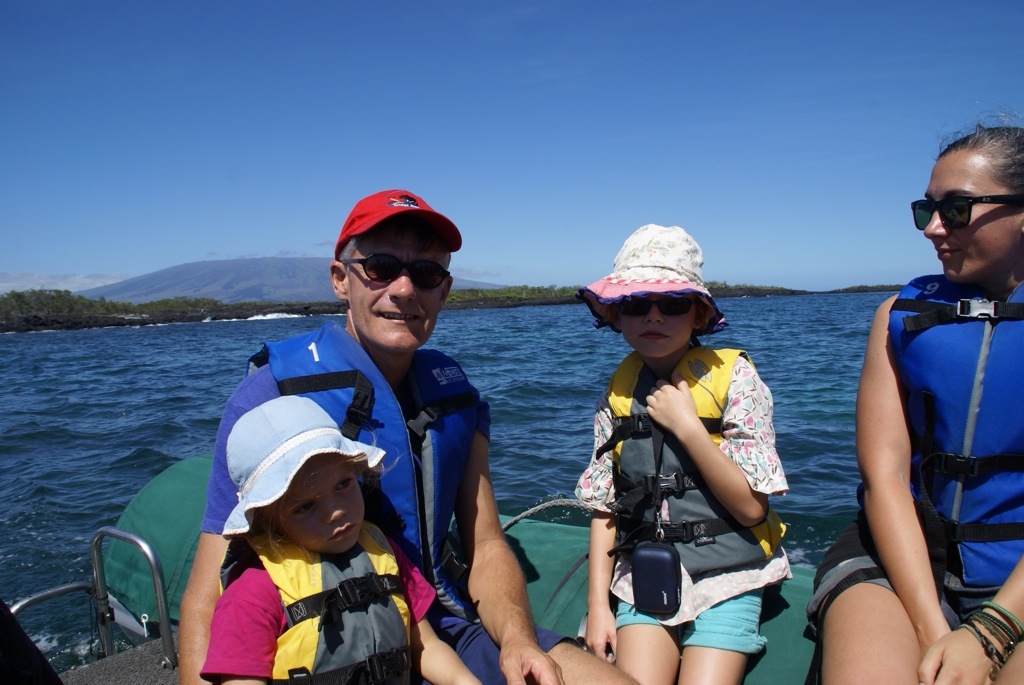
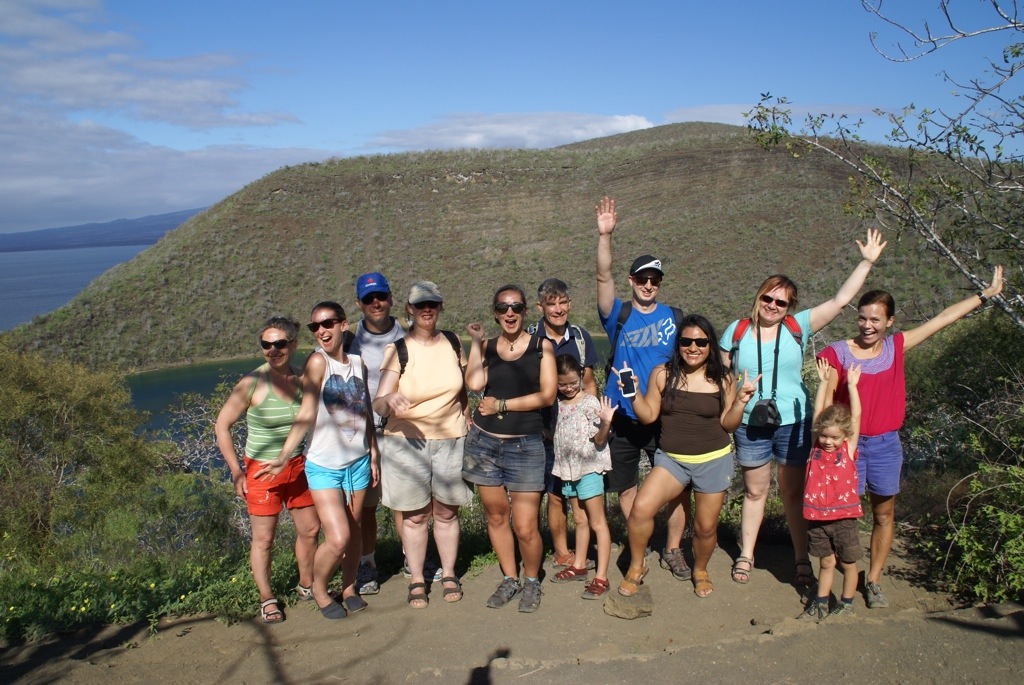
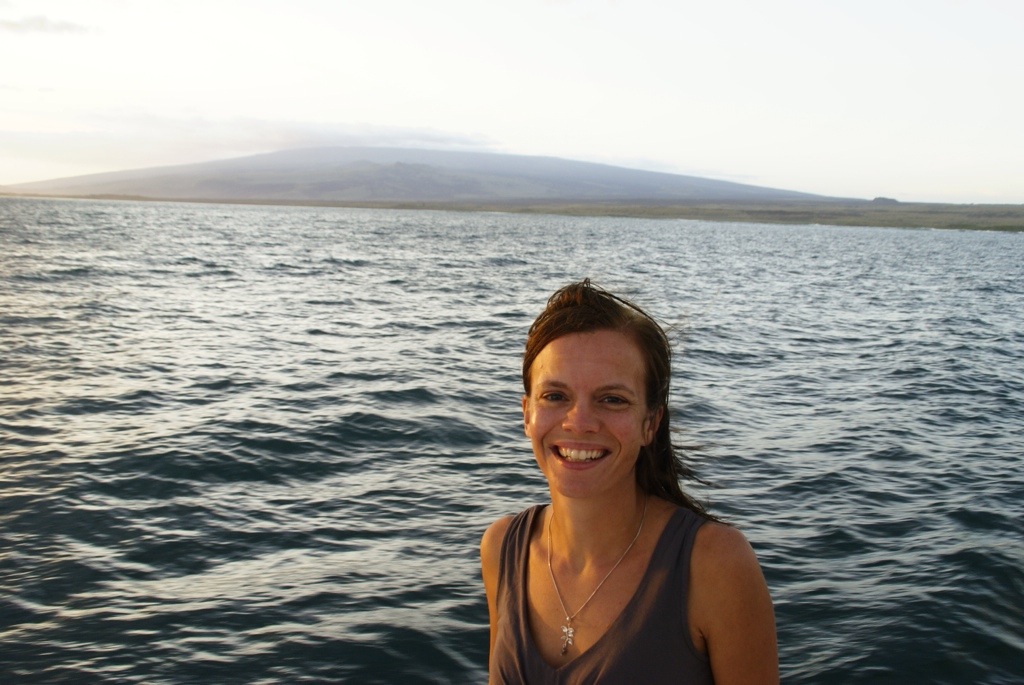 On arriving back in Quito we returned to the truck. We had left the truck in some "airport parking" about 5 km from the airport. We had had some GPS coordinates from another traveller of a hotel where you could park your vehicle while traveling to the Galapagos. However we had not been able to find the hotel. While wondering what to do we saw a sign that said VIP airport parking and then someone popped out from behind the sign who explained we should drive down the road as we would be able to park there. The parking was in a nice spot on a small farm with horses, chickens and even a peacock. They had adapted part of the land into a parking lot with lights and security cameras. They were very friendly and parking was only $6 a day and that included a free lift to and from the airport. They were more than happy for us to sleep in the truck so as it was late afternoon when we arrived back we decided to spend the night there before setting off on the rest of our Ecuadorian adventure.
On arriving back in Quito we returned to the truck. We had left the truck in some "airport parking" about 5 km from the airport. We had had some GPS coordinates from another traveller of a hotel where you could park your vehicle while traveling to the Galapagos. However we had not been able to find the hotel. While wondering what to do we saw a sign that said VIP airport parking and then someone popped out from behind the sign who explained we should drive down the road as we would be able to park there. The parking was in a nice spot on a small farm with horses, chickens and even a peacock. They had adapted part of the land into a parking lot with lights and security cameras. They were very friendly and parking was only $6 a day and that included a free lift to and from the airport. They were more than happy for us to sleep in the truck so as it was late afternoon when we arrived back we decided to spend the night there before setting off on the rest of our Ecuadorian adventure. 































